Bunbury Regional Art Gallery and Mess Books acknowledge the Wardandi Noongar people as the Traditional Owners of the land upon which the gallery stands. We acknowledge their continuing connection to land, waters and community. We pay our respects to all First Nations peoples and their cultures, and to Elders past, present and emerging. The South West Art Now exhibition and this publication include artists working across the South West regions, on Wilman, Wardandi/Wadandi, Ganeang, Bibbulmun/ Piblemen and Mineng/Minang/Menang Country.
SOUTH WEST ART NOW 2024
BUNBURY REGIONAL ART GALLERY
PUBLISHED BY: MESS BOOKS
ISBN: 978-0-6455860-4-6
Points of light map patterns, reveal pathways across the land to places of reflection for stargazers and storytellers, dreamers and discoverers.
Asterism waypoints
glow with sustenance and shelter, illuminate web-lines of memory, distinct and diverse.
Step out of the sphere of simulated bedazzlement, bring your eye naked before the sky-river, make the Southern Cross your crown for the blazing cosmos within.
Let your stardust become a nexus.
See the riddling nature of light transcend time and space.
PREFACE
DR. MICHAEL BIANCO
DIRECTOR, BRAG
South West Art Now (SWAN, formerly known as The Survey) is the longest-running review of contemporary art practices in the South West region. As one of the flagship exhibitions for a region that continues to produce some of the most significant artists in the state, the biennial survey offers a vital opportunity to reflect on dynamic recent developments in the arts, and to consider what the region is producing that is unique within a global context. From my position as curator and director of the Bunbury Regional Art Gallery, I see how South West artists continue to display a remarkable tenacity to engage the global issues of our time through their work, grappling with topics that range from climate change and ecology, to critiques of settler colonialism and late-stage capitalism. It is this range of thinking that the 2024 exhibition, titled A New Constellation, attempts to capture, by shifting the focus beyond individual or singular works toward conversations between works across time and place; toward notions of practice.
In a regional context, artistic practice can be considered as a living record of human experiences, ideas and attitudes. The way artists work – their process – both reflects and regenerates thinking, providing important insight for those of us who eventually bear witness to their creations. A New Constellation showcases new and existing works from 26 artists, taking in a range of mediums, from painting and sculpture to ceramics, mixed media and the digital. Reflecting on the wealth of artistic and cultural production in this region, A New Constellation recognises the homes and studios of these artists as energy centres – points of light – that are scattered and solitary but also inextricably linked. By tracing these connections – drawing new constellations – we can hopefully make meaning that is useful as we go about our lives.
Constellations are made up, of course, of these points of light –of stars, clusters of energy. They are formed through a process of combining forces, of gas burning and gravity pulling. When we look up at constellations from a distance, they hold meaning for us. Constellations have always held meaning and story, for many cultures throughout history. They are guides. They are composed of autonomous parts that exist in their own right but are bound up together and, through their connections, form particular meanings. We only see these stars, these constellations, when they are illuminated. In the universe, this happens by nature’s virtue every night. But down here, we must shine light on our artistic constellations ourselves, by seeking out creative work and sharing in it as a community.
Such is the purpose of SWAN, and this publication – the most ambitious in design and quality in the exhibition’s history – seeks to extend and sustain the light cast by our focus. Its purpose is to complement the exhibition and offer further insight into each artist’s practice and process. It is designed to be read either in the context of the gallery or outside, and to be returned to over time as a lasting documentation of the artistic records found inside.
01. FRAGILE INFLORESCENCE
Let our gaze turn to the place of nearby water, where light dwells in the river’s pulse, drinks the shadows of valley slope and rock pool, reflects the surface of time. Here, forest canopies stretch to whisper to stars, leaves of Blackbutt, Marri and Jarrah emboss the sky with fragile inflorescence.
Light lacquers smooth bark and plumage, carves corridors and pathways.
In the nebulae of morning mist, light touches arboreal life, quokka, woylie, and chuditch sequester in earth’s fragrant umber.
Light splinters with elemental force, ignites under story, layers of cinder and carbon trace the golden seed of return.

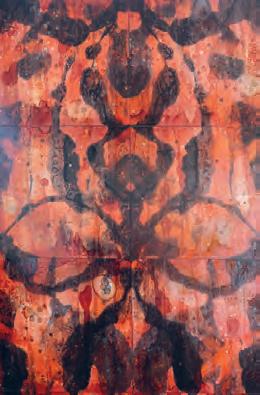
MONIQUE TIPPETT
LOCATION: DWELLINGUP
YEAR OF BIRTH: 1971
PRIMARY MEDIUM/S: SCULPTURE
YEARS AS PRACTICING ARTIST: 25
Monique Tippett is a leading Western Australian artist with a prolific studio practice and a catalogue of public artworks across Perth, the Wheatbelt and the South West. Her work explores her relationship with the natural environment of Western Australia’s South West, and specifically the forest landscape that surrounds her home near Dwellingup. Tippett predominantly works with wooden sculpture, creating finely crafted objects from local wood that transcend the two-dimensional to span the gap between sculpture and painting. Their often linear and geometric forms contrast with their natural materiality. The textural nuance of these works reflects and interacts with light, attempting to capture the interplay of elements that defines the forest. Tippett hopes to bring focus to the fragility of her local ecosystem in the face of the grave man-made threats it faces. She has exhibited widely and her work is held in many local, national and international collections, both private and public.
SWAN ARTWORK/S: MOTHER YEAR: 2023
MEDIUM: JARRAH VENEER, INKS AND BALGA RESIN ON BOARD
DIMENSIONS: 236 X 119 CM
Within the vast expanse of existence, from the cosmic dance of the universe and our own Milky Way galaxy, to intricate ecosystems teeming with life on earth, we find inspiration in the interconnectedness of all things. Tippett’s artwork, Mother, begins with this recognition of the myriad ‘tiny universes’ or ‘living constellations’ that comprise our existence, encapsulating the idea that each level of that existence, whether vast or microscopic, forms a unique tapestry of patterns and diversity. The phenomenon of pareidolia emerges as a pivotal concept in this work; a reflection on the human tendency to find meaning in the nebulous. As we observe the world, our minds sculpt patterns from chaos, a reflexive trigger that reaches into our subconscious. It is an intimate window into the human psyche, the genesis of mythologies, and the stories we weave in the stars. Here, repetition and reflection in patterns and perception became the focal point of this exploration.
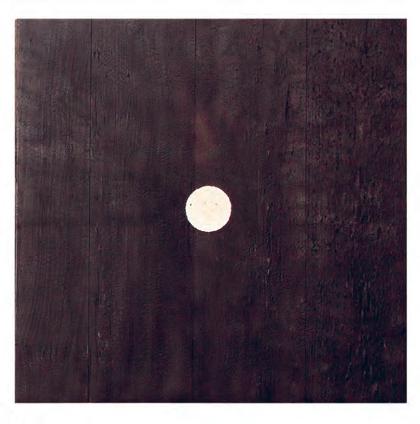
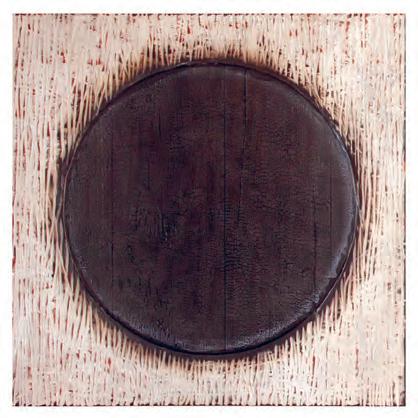
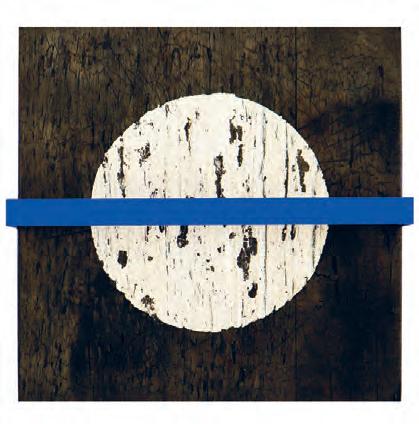
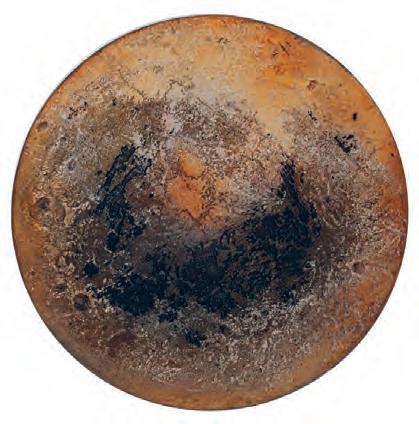
02. CONFIGURATIONS
Luminous imaginings point the way for wanderers and wonderers, around curving coastal plain to the place of three waters, where ocean, estuary, and river weave configurations of ebb and flow. Here, sunrays gloss the western sky with colour, anchor reflection on sea and land.
Light laces bubbles to surf, bottlenose beam their eminence, and in the silty shadow of white mangroves waterbirds arc their reverent necks.
Cool breezes cast glister over Tuart leaves, comb the tendrils of remnant Casuarina, bury salt-crusted skeletons in layers of sand.
Dark basalt rock erupts from ancient genesis, holds the warmth of memory, etches story into porous form.
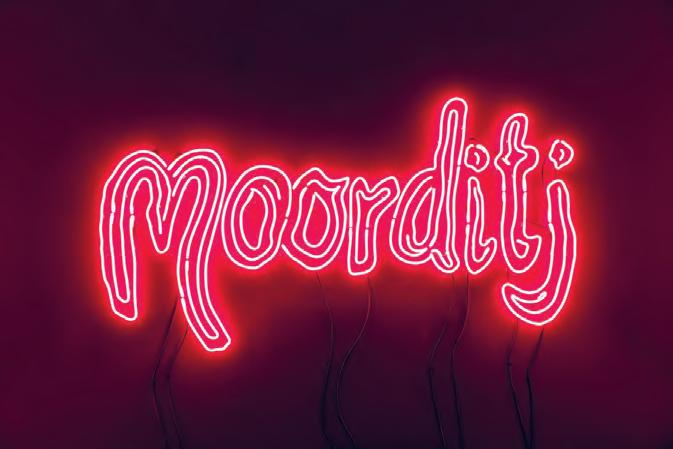
AMANDA BELL
LOCATION: BUNBURY
YEAR OF BIRTH: 1965
PRIMARY MEDIUM/S: CONCEPTUAL, SCULPTURE, INSTALLATION
YEARS AS PRACTICING ARTIST: 5
A Badimia and Yued woman born on Whadjuk Country, Amanda Bell has a diverse creative repertoire, working with sculptural materials, video, sound, textiles, found objects, and more recently neon lighting. Ambitious and experimental, her practice is dedicated to “…trying new ways of telling stories that are sometimes uncomfortable and painful, sometimes fun and frivolous”. She has participated in several group exhibitions, including Fremantle Arts Centre’s Revealed and Bunbury Regional Art Gallery’s Noongar Country, and her work is held in various state and private collections. Her iconic, bright-pink neon sculptural work From our lip, mouths, throats and belly is held in the collection of The Art Gallery of Western Australia. The sculpture takes the form of the Noongar word “Moorditj”, meaning good or awesome, and is accompanied by a sound work broadcasting the voices and stories of Elders from her hometown of Undalup (Busselton). The work reflects on the weight of words, and the power of language in connecting with one’s cultural and familial heritage. She says: “I seek to engage with others by telling stories in a way that is ‘right way’ for me as an Aboriginal person and artist, and to make a contribution to making spaces culturally safe in the arts and beyond. I come from experiences of grappling with ‘otherness’, [and my work is] often an attempt to say something about the role of language in the creation and maintenance of power structures.”
SWAN ARTWORK/S:
BELOVED ONE PRODUCTIONS PRESENTS - THE MOST EXCELLENT ELECTION SIDE SHOW......... FUCK YOU AUSTRALIA AND YOUR CAST OF PERFORMING FREAKS, NAYSAYERS AND HUMAN EXCREMENT. ROLL UP AND WATCH A NATION BRUISE. ROLL UP AND HEAR A NATION WEEP, ROLL UP AND FEEL A NATION TRASHED. ROLL UP, ROLL UP, ROLL UP.
YEAR: 2023
MEDIUM:
BALLOONS, MIRRORS, VINYL, AUDIO
UNDOING
It’s a curious thing
the Undoing.
In the satisfaction to minutely destroy, stitch by stitch, slash upon slash
With no thought to re-make or gather together
Yet.
Swish tck, swish tck -
The sound of the washing and the pegging of their dirty linen on our clothes-line
That moans with our anguish and their sin
We gather the layers, hugging the scattered
Pain and pieces. Our forever outfit;
Blown away, and away.
In her mind she ran, up onto the round, smooth hill toward the one remaining tree. A hill ravaged by men with their long metal arms and their putrid sweat falling into each sparse shrinking curve.
Each day, she hurtled towards that lone tree with only what she knew, and felt, in pursuit
Falling at its base. Her only solace. The brown arms and feet rising to meet her,
Each and every time.
...AND THE CROW ARE WE
I went around to another’s Country, later realising with sorrow it was my own. Ours,
and mine, and I didn’t know That the river was giving and giving and in the places it did, There was this space.
And in that space the young wardong flew alone
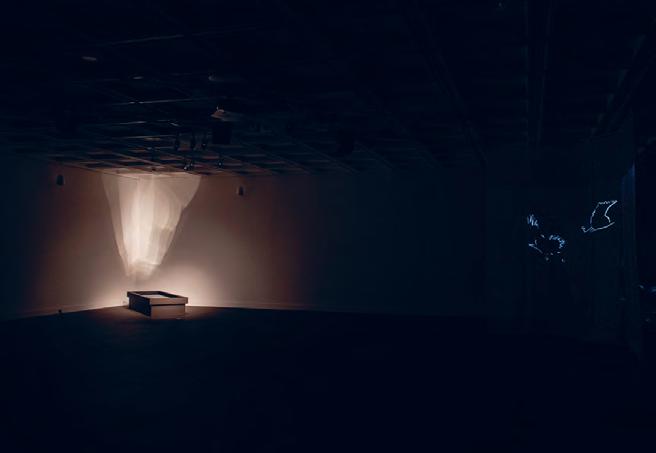
This terrible space between us and that river and how that could never be bridged. I could shift, spin, swirl n shimmy and never touch the salty sandy others side. Forever separated from those springs amongst the salt.
In that separation, the wardong mob called and cried and cawed swimming in the hot full air. Black. Flesh. Blood. Red.
the sun shimmer off salt shifting tuarts falling on the dry earth heaving Derbarl Yerrigan softly waarangkiny bilya muddied as the kwilena float upside and down, downside and up
then shifting
And in that shift, wardong mob mourned. Across Whadjuk Country, old man cried for that young one, and on Wardandi land, the mob sung out for their winged koolang
I accept; There will be salt for me, and salt until I am no longer.
I have a connection to salt and I am the salt and it cuts and it comforts and is the salt. And the salt is the sorrow and on into the shimmer
Because the salt shifting
and shining, and Shimmer
Shim Shi Sh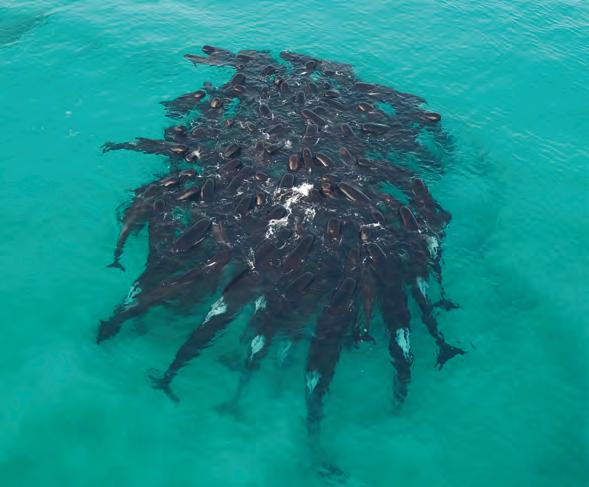
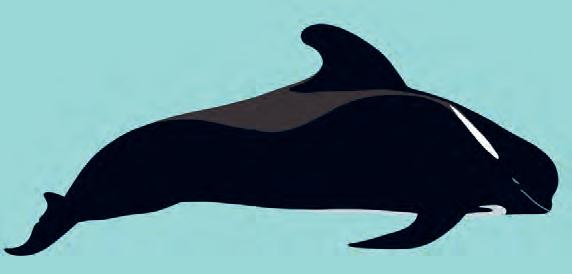
LOCATION: COWARAMUP
YEAR OF BIRTH: 1986
PRIMARY MEDIUM/S: PAINTING, PRINT, SCULPTURE
YEARS AS PRACTICING ARTIST: 15
Ian Daniell (b. Sunderland, UK) is an artist and ocean explorer working through his studio, Life-Size Ocean Art. His depictions of iconic marine species in emblematic form and bright block colours – produced at 1:1 scale – are celebrations of marine life and an ode to encounters in the wild.
Barring a six-month spell in Los Angeles, Daniell lived and worked in London between 2006 and 2018, having graduated from Chelsea College of Arts in 2007 (Foundation Degree in Art & Design) and Camberwell College of Arts (Bachelor of Arts Honours) in 2010. There, he produced solo exhibitions and featured in several group shows, including the Royal Academy Summer Exhibition. He also worked as an art technician and project manager during this time, producing work for the likes of Sir Anish Kapoor and the British Museum. In 2018, he travelled to Western Australia, where encounters with wild orcas, whale sharks and giant manta rays inspired him to relocate. He has lived and worked in WA since 2019, exhibiting widely. His work Krill (2022), which depicts thousands of tiny krill at 1:1 scale, was acquired by WA Museum Boola Bardip and is displayed alongside that museum’s longstanding blue whale skeleton.
SWAN ARTWORK/S: PILOT WHALE YEAR: 2024
MEDIUM:
ACRYLIC PAINT, TWO PACK GLOSS, COMPOSITE PANEL DIMENSIONS:
135 X 305 X 5 CM
Pilot Whale is made in response to the shocking 2023 mass-beaching of 97 long-finned pilot whales at Cheynes Beach, along Western Australia’s southern coast. Before the whales reached the shore, they were captured by aerial footage in a heart-shaped formation: a large black mass of clustered cetaceans, suspended amidst a teal sea. In unprecedented behaviour, the whales formed a huddle before charging at the shore, seemingly intentionally stranding themselves. In efforts to save them, volunteers managed to return roughly half of the whales to sea, but all returned and not one of the whales survived. Via mass media coverage, the simultaneously heartbreaking and confounding moment captured the attention of millions, and has resulted in numerous scientific investigations into its causes. Pilot Whale memorialises the event, and is also a vessel for deepened consideration of this research. While Daniell typically works at 1:1 scale, the extent of the occurrence – which would occupy approximately 25 square metres if depicted at lifesize – challenged him to consider new forms and perspectives. Taking the aerial photographs as a starting point, Daniell focuses on the form of a single pilot whale, bringing us into a more intimate confrontation of the devastating occurence – animal to animal, individual to individual. While a necessary functional decision, this reframing also imbues the work with a more challenging perspective, inviting the viewer to consider more closely the possible ecological or existential causes and implications of the whales’ behaviour.
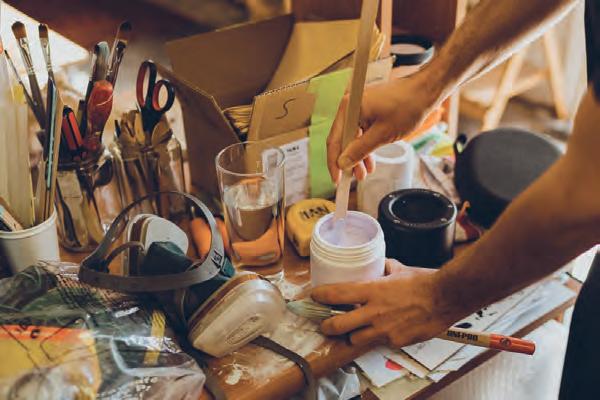




LOCATION: BUNBURY
YEAR OF BIRTH: 1958
PRIMARY MEDIUM/S: PAINTING
YEARS AS PRACTICING ARTIST: 35
Jenni Doherty is an established artist who spent many years working as an art educator after completing her formal studies, whilst at the same time forging her career part-time. Her works are recognisable for their layering of images and mediums, which demonstrates and defers to the handmade. While on the surface highly decorative, Doherty’s repetitious use of pattern and texture in both her paintings and textiles in fact reflects the repetitious patterns and cycles of life, and is the result of a process of thinking, listening and observing. Symbols such as the vase – a recurring motif in her work – position notions of womanhood and motherhood within this equation, exploring the precariousness of balancing family, home and work, and ultimately, the majesty in such perceived mundanity. Doherty’s process is highly introspective, intuitive, and emotive, absorbing and digesting a range of influences and imagery. Creating a link to a personal landscape, her works attempt to inspire a relationship to time and place and remind us of the importance of human imagination.
SWAN ARTWORK/S: RECODE YEAR: 2023
MEDIUM: EGG TEMPERA
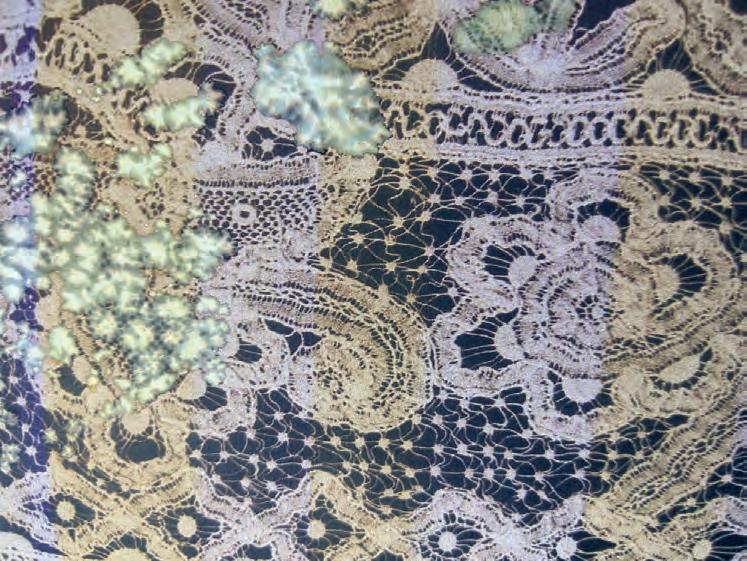
Past works, studies and studio ephemera, Jenni Doherty. All images supplied by the artist.
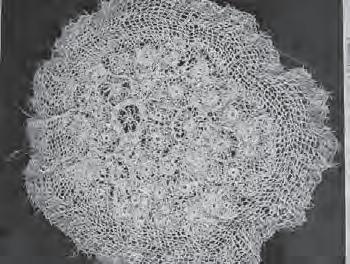
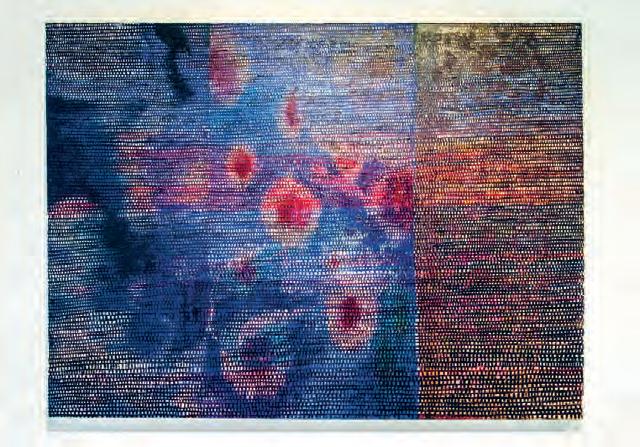
A welcome sign seen at Thommo’s Community Garden, which reads: “Welcome to our Sensory Garden. Take time to wander, smell and touch the herbs and flowers.” Photograph: Dr. Michael Bianco.
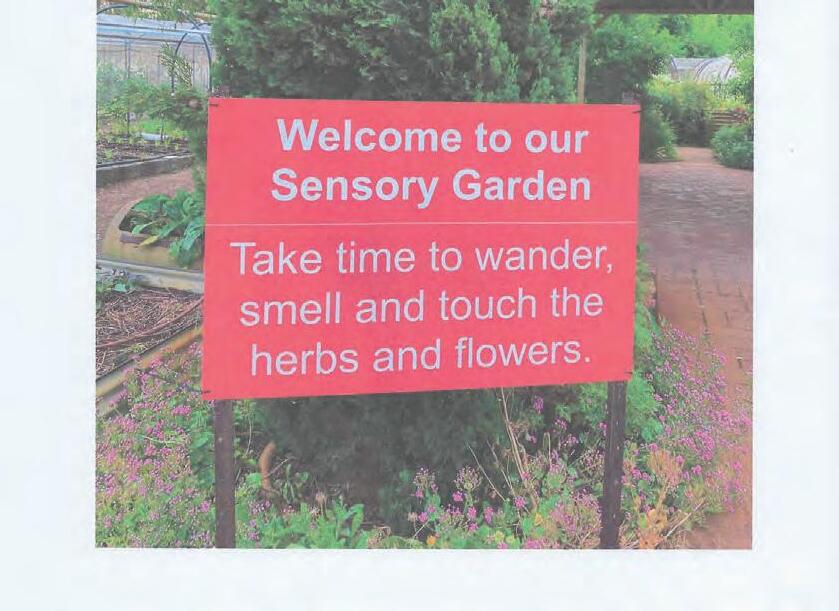
A wooden sign seen at Thommo’s Community Garden, which reads: “SPIRIT OF PLAY FAMILY DAYCARE”. Photograph: Dr. Michael Bianco.

LOCATION: BUNBURY
YEAR OF FOUNDING: 2009
Founded by John Thomson in February 2009, Thommo’s Community Garden is a notfor-profit enterprise providing access to a vegetable garden for the local community, with a focus on access for people with disabilities. The garden is a welcoming, peaceful, inspiring and productive place, with garden beds available for annual lease where local residents can grow their own produce. Other communal beds are managed by a team of dedicated volunteers, with a weekly harvest going to Foodbank WA’s Bunbury branch.
SWAN ARTWORK/S: UNTITLED
YEAR: 2024
MEDIUM: COMMUNITY GARDEN, FOUND OBJECTS
Combining ephemera and objects from the grounds of Thommo’s Community Garden and an installation of wheelchair-accessible garden beds in the gallery’s courtyard, this showcase is a gestured recreation of the kind of cultural, agricultural and social production that happens in this important place. Within this space, audiences are prompted to reflect on the meaning of ‘production’ not only as it relates to cultivation, growing and farming, but also to more social and relational realms, and ultimately to broaden our understanding of how, and through what processes, our culture is produced and reproduced.
A
Text is
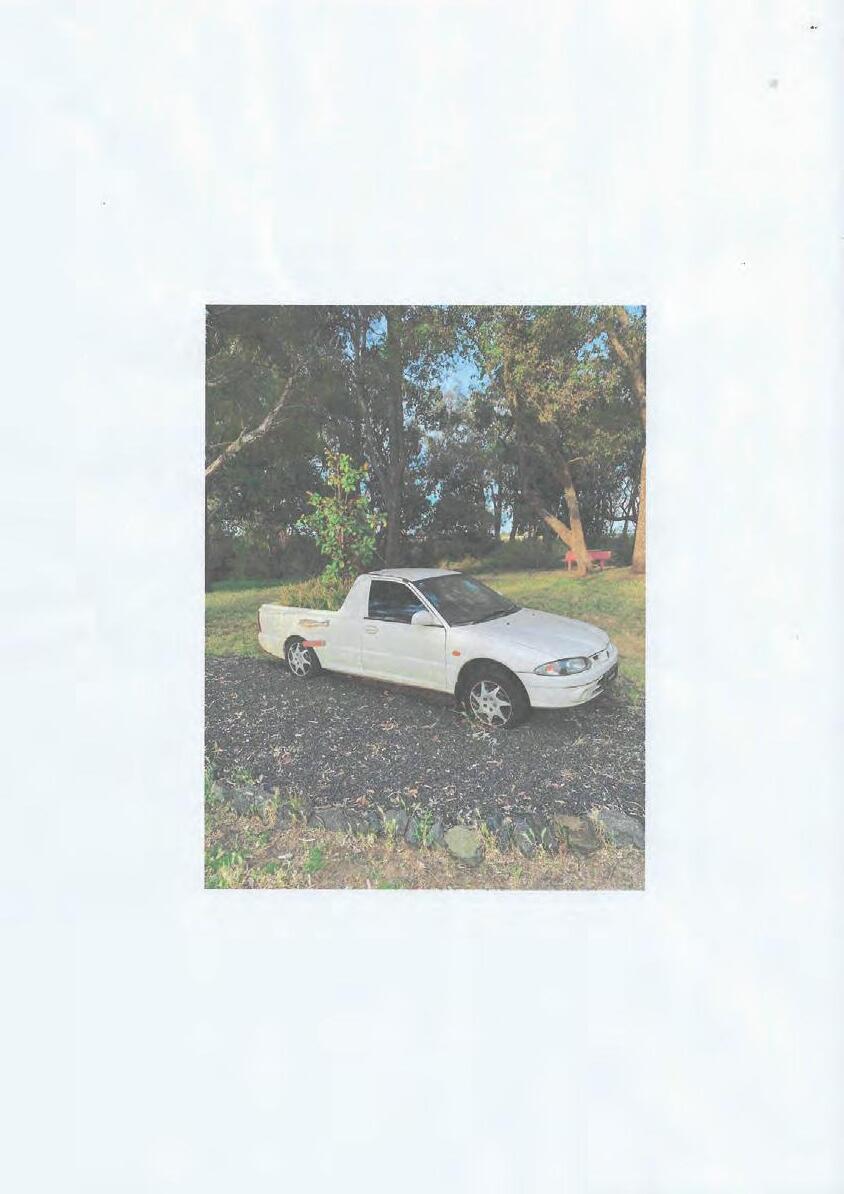
 sign detailing the history of Thommo’s Community Garden.
shown to the right. Photograph: Dr. Michael Bianco.
An old ute repurposed as a planter bed, seen at Thommo’s Community Garden. Photograph: Dr. Michael Bianco.
sign detailing the history of Thommo’s Community Garden.
shown to the right. Photograph: Dr. Michael Bianco.
An old ute repurposed as a planter bed, seen at Thommo’s Community Garden. Photograph: Dr. Michael Bianco.
Thommo’s Community Garden
John Thomson worked tirelessly for 10 years, bringing to life his brother Colin’s dream of a vegetable Garden for the Bunbury Community to enjoy and help people in need.
Supported by Bunbury Council workmates, local sponsors and volunteers John has created arguably the best Community Garden in WA. A sanctuary for individuals and community groups to enjoy and grow their own organic vegetables in a beautiful setting.
Individual beds are available for annual lease, while the team of volunteers organically manage the remaining large gardens providing Foodbank Bunbury with fresh vegetables each week year round. Volunteers are always welcome!
Thankyou Thommos’ for having the dream and then the courage to see it through.
Established 2009. Thommo’s Community Garden is a not for profit organisation.

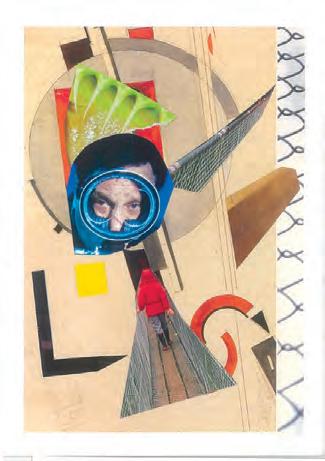
Scanned pages from Seamus Hughes’ notebook, showing hand-written text explaining the Postcard exchange. Supplied by the artist.
LOCATION: DUNSBOROUGH
YEAR OF BIRTH: 1941
PRIMARY MEDIUM/S: PERFORMANCE, COLLAGE
YEARS AS PRACTICING ARTIST: 49
Seamus Hughes is a mixed media artist who has worked across various art forms. He started life as a dancer and studied visual art at the same time, and his eventual performance work was heavily influenced by an early encounter with renowned artist Joseph Beuys. More recently he has embraced collage as his main medium of expression, creating new stories from found images. He views his work as a dialogue in which its viewer is the most important part.
SWAN ARTWORK/S: ART-BARTER
YEAR: 2024
MEDIUM: PERFORMANCE, COLLAGE
Art-Barter is a performative postcard exchange driven by the artist’s collecting and collaging. Seated in the gallery with a pile of postcards at his work desk, Hughes invites viewers to become collaborators by engaging in a dialogue – about anything – and working on their own signed and dated postcard. Through this open exchange, Hughes raises questions about what constitutes art, the manipulation of images and the artist-audience relationship.
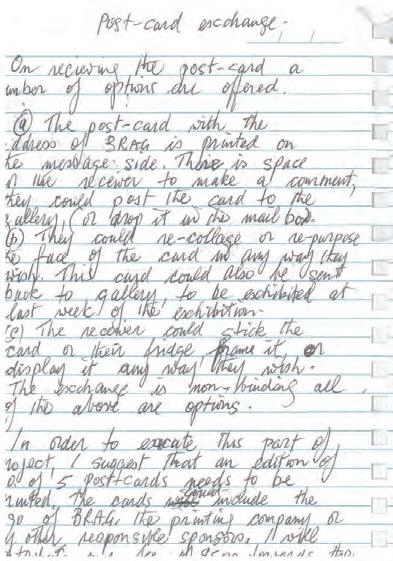
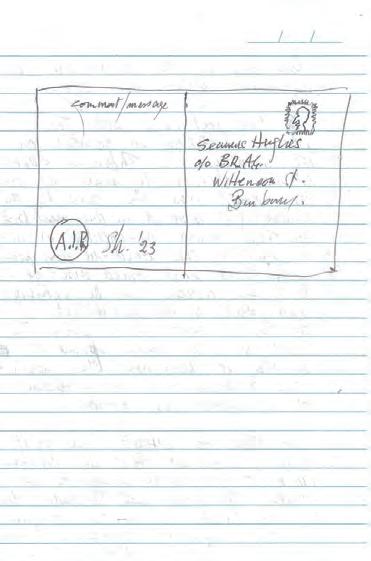
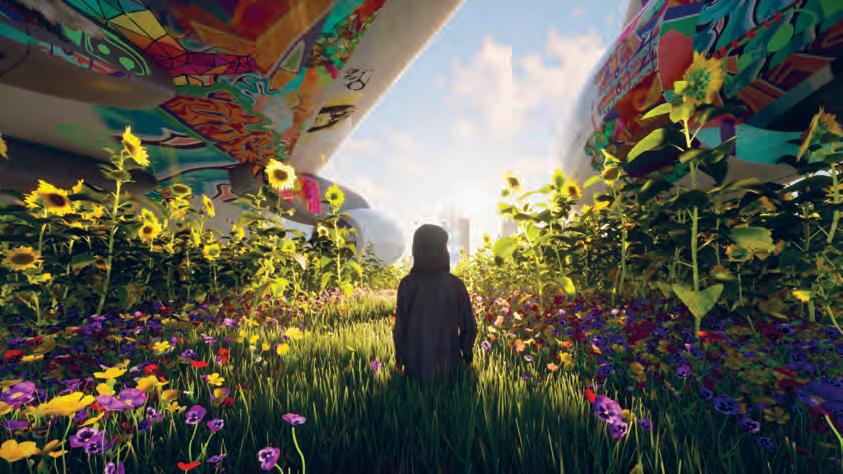

COREY KHAN
LOCATION: DONNYBROOK
YEAR OF BIRTH: 1993
PRIMARY MEDIUM/S: SCULPTURE, FOUND MATERIALS, DIGITAL ANIMATION
YEARS AS PRACTICING ARTIST: 3
Corey Khan is a Noongar/Yamatji artist and architect from Donnybrook, Western Australia, with a strong sense of connection to Ngalang Boodja (Our Country). Growing up, Khan spent a lot of time out bush, which informed his outlook and understanding on many levels. He is a multidisciplinary designer with a growing range of technical skills and a vision for the future of his people, land and culture. He seeks to explore uncharted avenues of Indigenous design by incorporating Aboriginal cultural aesthetics and principles into concepts, ultimately creating a fusion between traditional design and modern technology.
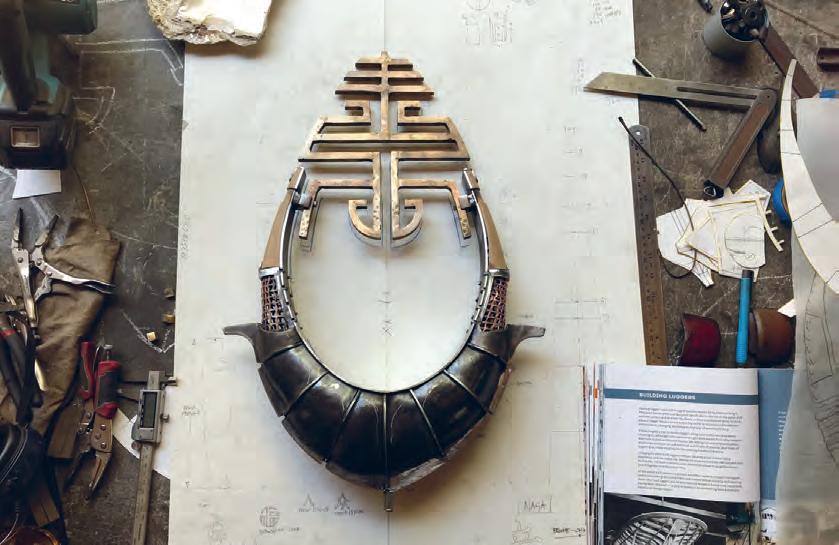

LOCATION: LESCHENAULT
YEAR OF BIRTH: BOTH 1970
PRIMARY MEDIUM/S: SCULPTURE, PUBLIC ART
YEARS AS PRACTICING ARTISTS: 28
Both born on the south west coast of Western Australia, Nicole and Alex Mickle grew up amongst the sand, black dirt and doublegees of the region’s pristine beaches. They now live and work from their home and workshop in Leschenault, near Buffalo Beach. Their evolving, collaborative practice is informed by their early studies in art, design, photography and sculpture from 1988–91, as well as the natural, social and emotional landscape in which they live. In the early 1990s, they formed Safehaven Studios, through which their main focus has been the design and production of large-scale public artworks, including Bunbury’s well-known Wardandi Boodja at Koombana Bay. Many of their public art projects involve extensive community involvement, creating opportunities for those closest to the work to enter into a dialogue with it and ensuring the results reflect the issues, values and perspectives that impact on their everyday lives.
SWAN ARTWORK/S:
TITLE, YEAR: FUSION – INTERWOVEN CULTURE (MAQUETTE), 2018–21
MEDIUM: JARRAH, COPPER, BRONZE, STEEL, TUART, TWINE
TITLE: DOCUMENTATION OF FUSION – INTERWOVEN CULTURE
MEDIUM: PHOTOGRAPHY, ENGINEERING DRAWINGS, VIDEO
TITLE, YEAR: AGGIORNAMENTO (MAQUETTE), 2023–24
MEDIUM: ALUMINIUM, CORTEN STEEL
TITLE, YEAR: FLOW (MAQUETTE), 2023–24
MEDIUM: ALUMINIUM, CORTEN STEEL
Comprising a series of maquettes and project documentation from various largescale public artworks completed by Alex and Nicole Mickle, this showcase provides an insight into the highly collaborative and technical process that goes into each work. Documentation in the form of written records, concept sketches, engineering drawings, photography and video show an intricate and powerful meeting of artistic, community, technological and mechanical processes. The maquettes allow us to imagine the works at larger scale and study more intimately the artistic detail and the mechanics that define them. For example, in the case of Fusion – Interwoven Culture, which is installed as a landmark and welcome to Chinatown in Broome, we gain insight here into the way in which this sculpture responds to the town’s pearling heritage; its many layers of people and cultures, shared histories, stories and connections that are woven into the fabric of place. Or with Flow, which will later this year be installed at Fremantle’s John Curtin College of the Arts, we can see a process of exchange unfold between the artists and the music students with whom they co-designed this sculpture. Together, these materials weave an image of the Mickles’ practice and their contribution to the public art of Western Australia.
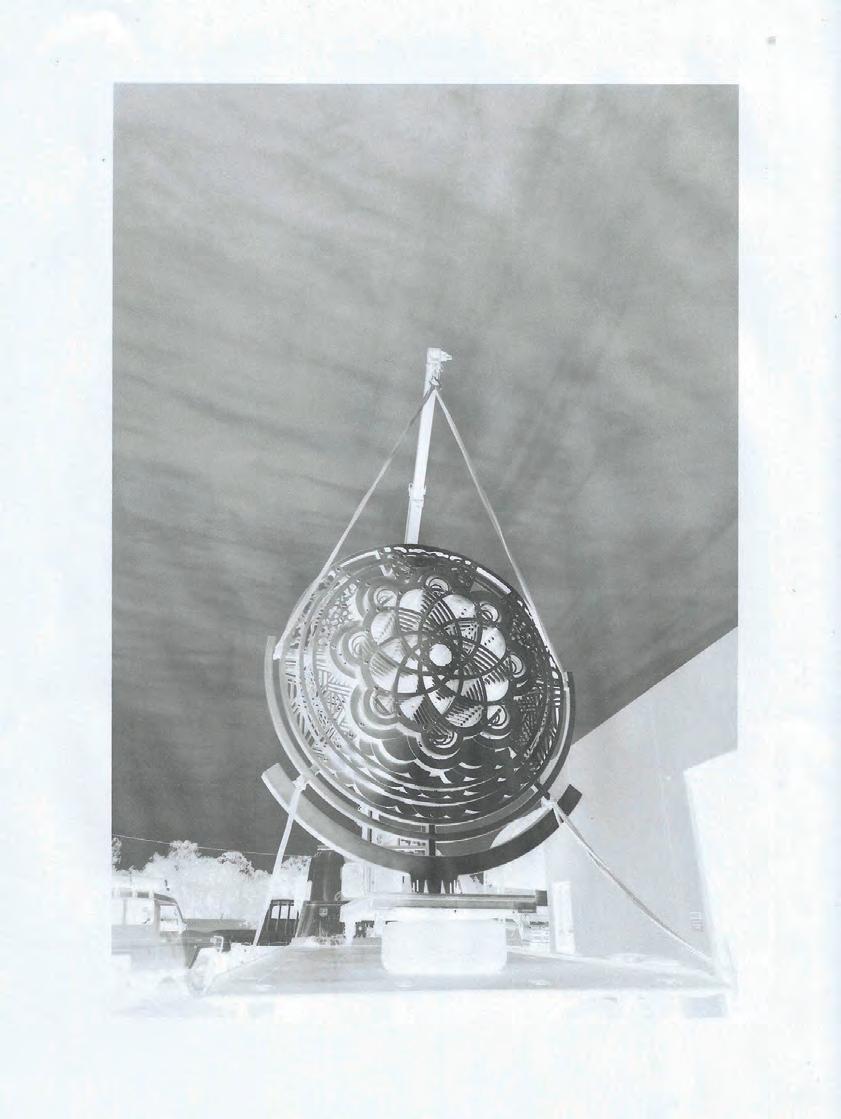
Work in progress images, Flow , 2023–24. Image courtesy the artists.
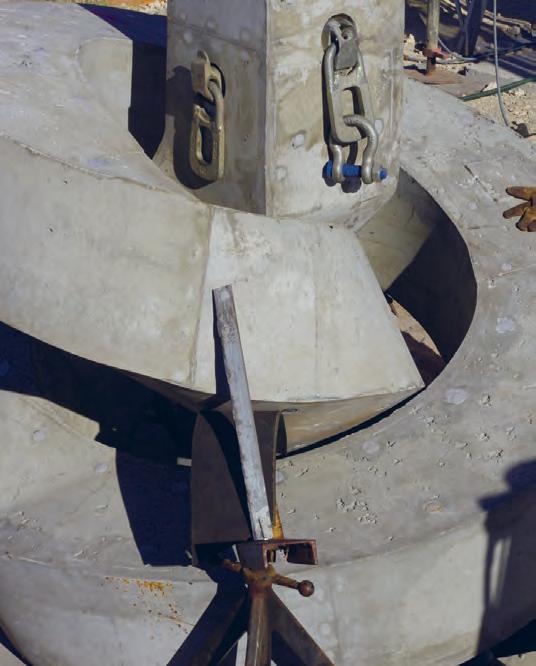
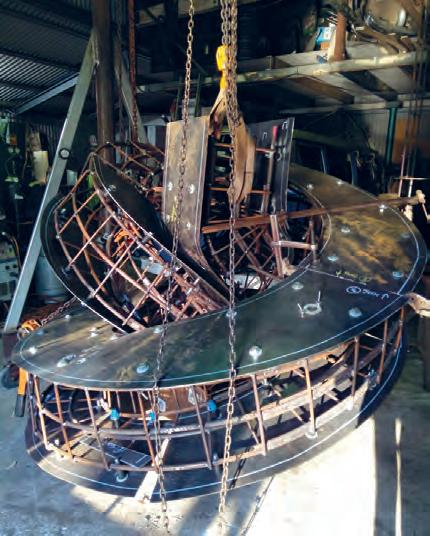
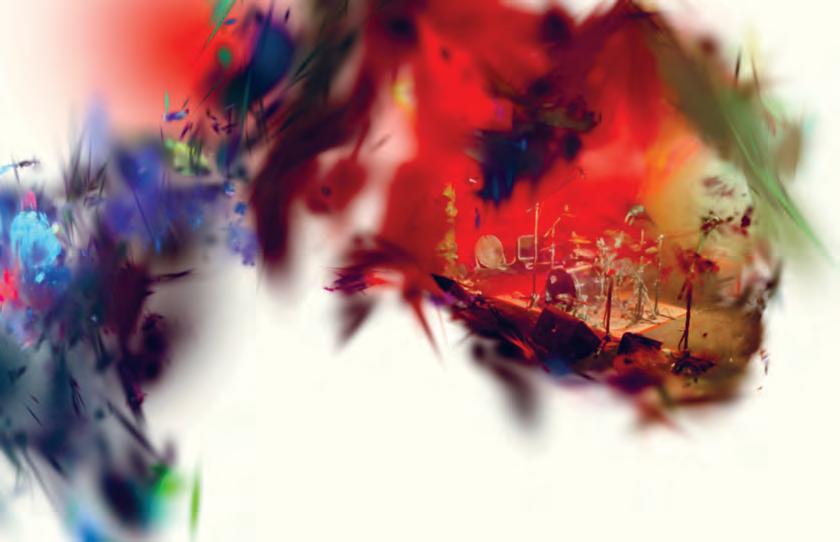



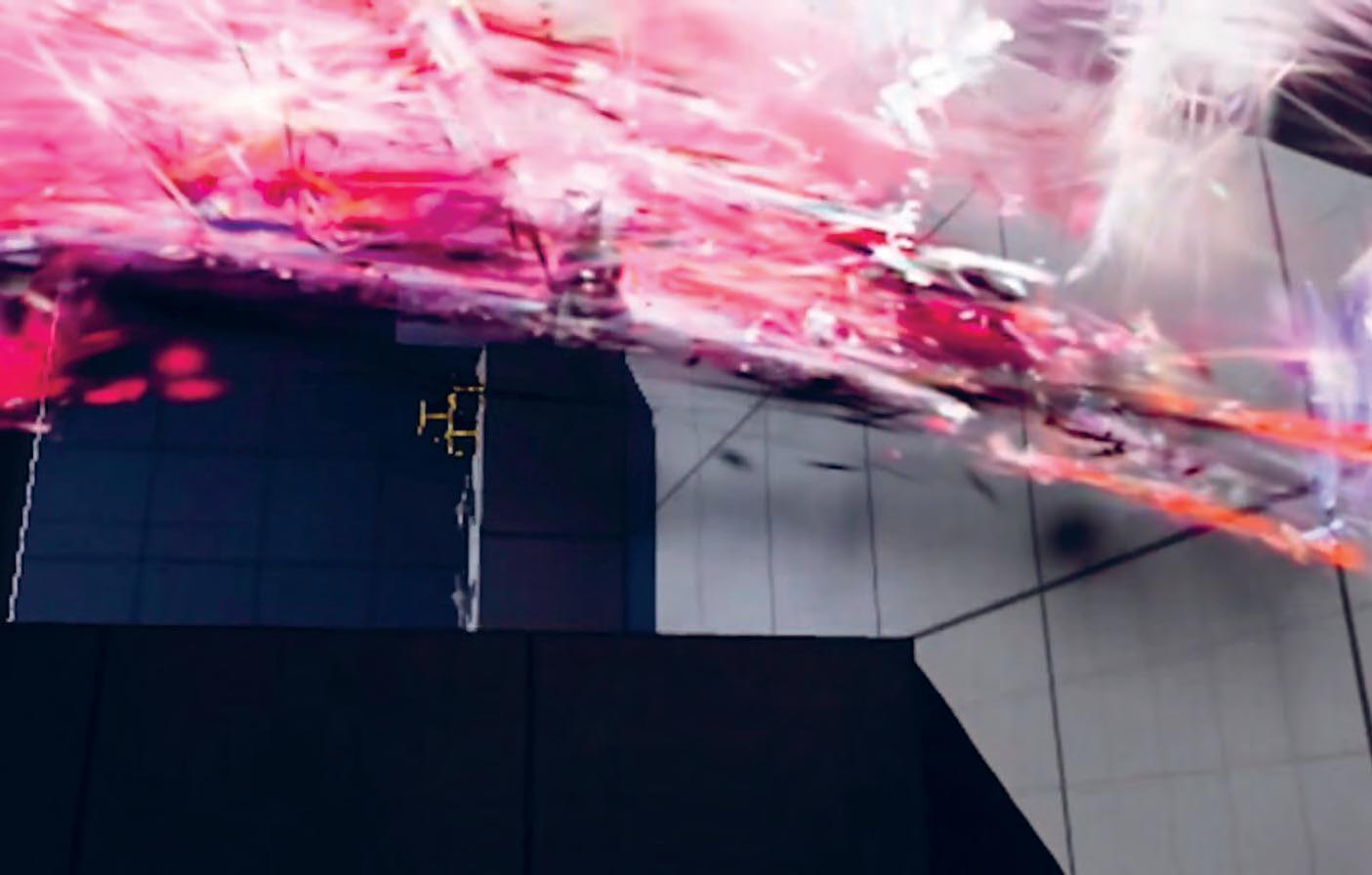









DEANNA MOSCA
LOCATION: BUNBURY
YEAR OF BIRTH: 1986
PRIMARY MEDIUM/S: DIGITAL, PAINTING, DRAWING
YEARS AS PRACTICING ARTIST: 20
Deanna Mosca is a multimedia artist based in Goomburrup/Bunbury, Western Australia, whose work centres around the exploration of identity with a visual anthropological lens. She brings her subjects to life using digital technology, delving into the intricacies of individuality and the profound connections that bind us all; a reminder of our shared humanity. Beyond her artistry, Mosca actively engages in community projects, using her skills as an artist to create positive change. Her impactful contributions have earned her a number of awards, and she shares her knowledge and passion by teaching aspiring artists of all ages. She has exhibited her work in Melbourne, Victoria, as well as locally.
SWAN ARTWORK/S:
TITLE: M E R I D I A N
YEAR:
2023–24
MEDIUM: VIRTUAL REALITY, DRUM STOOL, RUG
TITLE: MORE THAN THREE CHORDS
YEAR: 2023
MEDIUM: OIL ON CANVAS
TITLE: TWO OH EIGHT
YEAR:
2023–24
MEDIUM: DIGITAL ARTWORK ON PAPER
TITLE: BOWL BASH
YEAR:
2023–24
MEDIUM: DIGITAL ARTWORK ON PAPER
Drawing on Mosca’s dual role as both artist and musician, these works attempt to embody the diversity and richness of human experiences of music, particularly grassroots punk music in Western Australia. Reflecting on the ringing ears, sweat-filled dance floors and beer-soaked carpets of this unique world in all its chaos and connection, the work examines how the punk music subculture is represented, as well as considering aspects of ritual, physical objects and spaces, identity, and human interaction. Mosca has employed the use of Gaussian Splatting, an AI technology that captures and recreates 3D spaces in real time, rendering their dimensions into particles. This serves as a medium for exploring the passage of time, enabling an analysis of our movements and our shared or distinct social practices. The extreme abstraction of real world spaces into scattered markings also has a relationship to the energy of punk music – akin to both the chaos of life that the music seeks to capture, and the often frantic or fragmented sensations it elicits as an art form.
Rizzy, Petticoat , 2015. Icing, dimensions variable; and, Corset , 2008. Icing, dimensions variable. Images courtesy the artist.

Rizzy, test for Insidious Invasion , 2024. Icing, wire, sugar, dimensions variable. Image courtesy the artist.
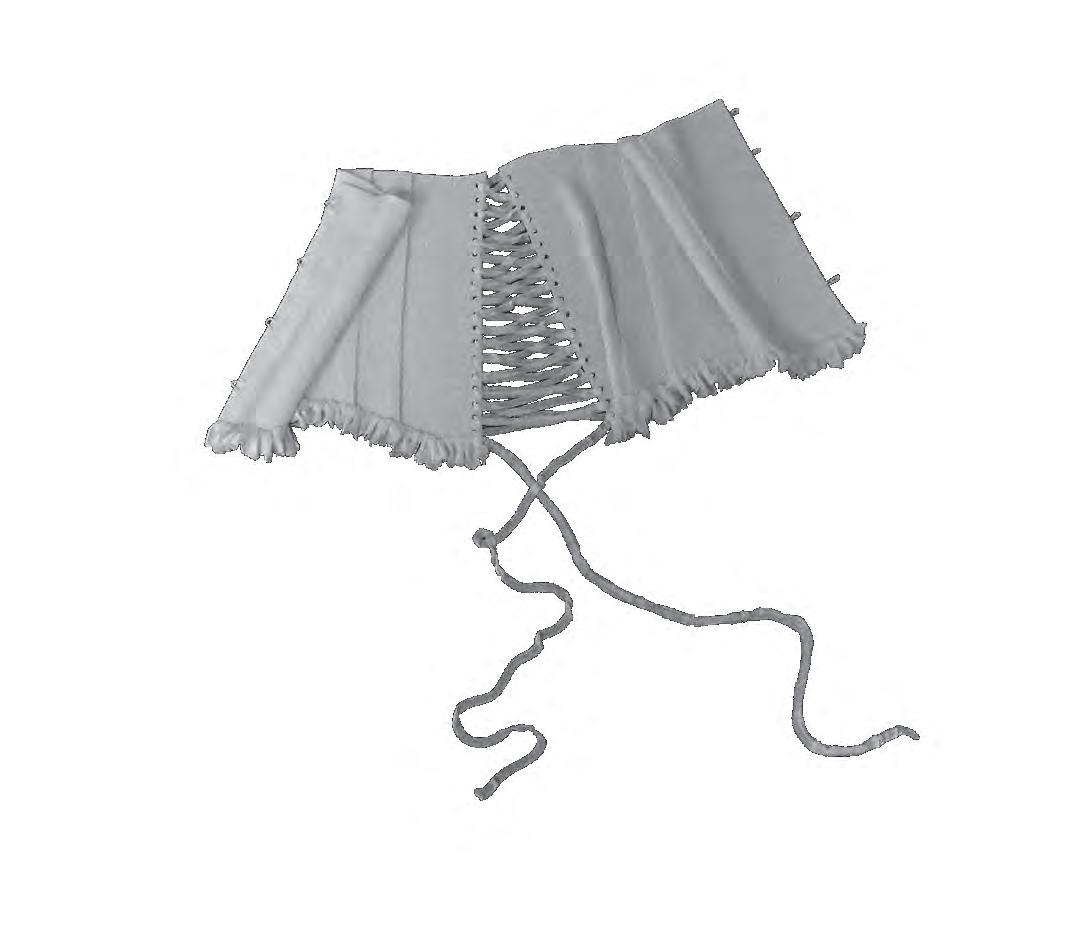


LOCATION: BUNBURY
YEAR OF BIRTH: 1983
PRIMARY MEDIUM/S: SCULPTURE, INSTALLATION, PERFORMANCE
YEARS AS PRACTICING ARTIST: 16
Rizzy’s practice explores the essence of femininity, examining notions of purity, softness and society’s expectations of women. She uses materials that reference the female experience – primarily including sugar and icing – to create life-like sculptures and replications, which often form part of conceptual or site-responsive installations. Her recent replication of the endangered orchid Caladenia busselliana is held in the City of Bunbury collection.
After graduating from central TAFE in 2007, Rizzy was awarded a residency at Perth Institute of Contemporary Arts (PICA) and showcased in that gallery’s esteemed Hatched exhibition. In 2010, she was granted a studio and residential apartment through Artsource (2010 to 2019) and during that time, in 2014, she won Best Visual Arts Award at Fringe World Festival for her performance work Eat Me. She has curated numerous exhibitions, with a focus on showcasing women artists from Western Australia. In the 2020 South Western Times Art exhibition, Rizzy won the Bunbury Art Prize for her work Trail.
SWAN ARTWORK/S: INSIDIOUS INVASION YEAR: 2024
MEDIUM:
ICING, WIRE, SUGAR
Sculpted entirely from sugar, Rizzy’s replications of native and exotic flora proliferate in the gallery space across the duration of the SWAN exhibition, in an ongoing exploration of the relationship between feminity and flowers, and humans and the natural environment. Throughout Western art history, flowers have been used to symbolise a woman’s sexuality and supposed delicacy, from blooming in youth to withering in old age. Rizzy’s employment of ingredients typically used in baking – a historically feminine practice –is a kind of daring, challenging audiences to reconsider their inherited ideas about women and flowers, while also reflecting the fragility of plant life in our deteriorating environment. The subtly intrusive placement of the works is an intentional role reversal, where plants become the invaders of this human space rather than the other way around – as is so often and so detrimentally the case. The sculptures are beautiful, intricate and lifelike, inviting audiences to approach and admire; but their presence is also a reminder of our unbalanced and dislocated relationship with nature, in which the separation of nature and culture underpins widespread ecological devastation.
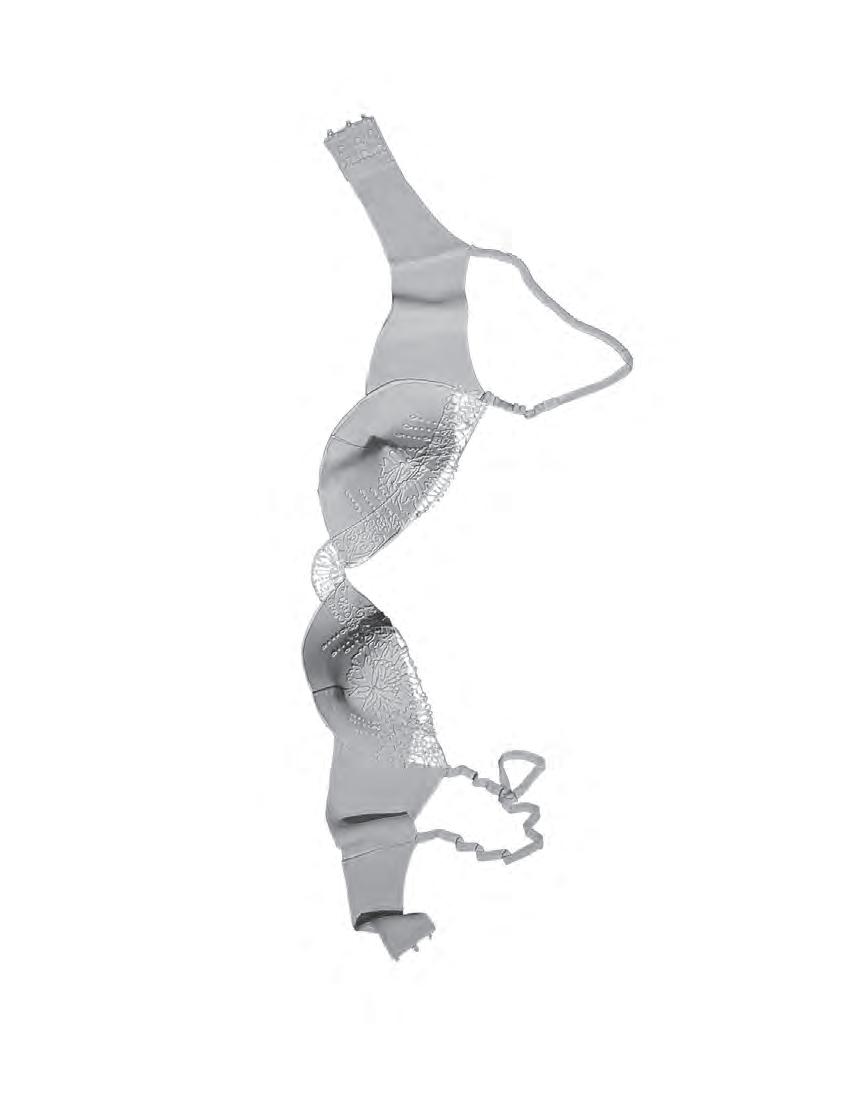
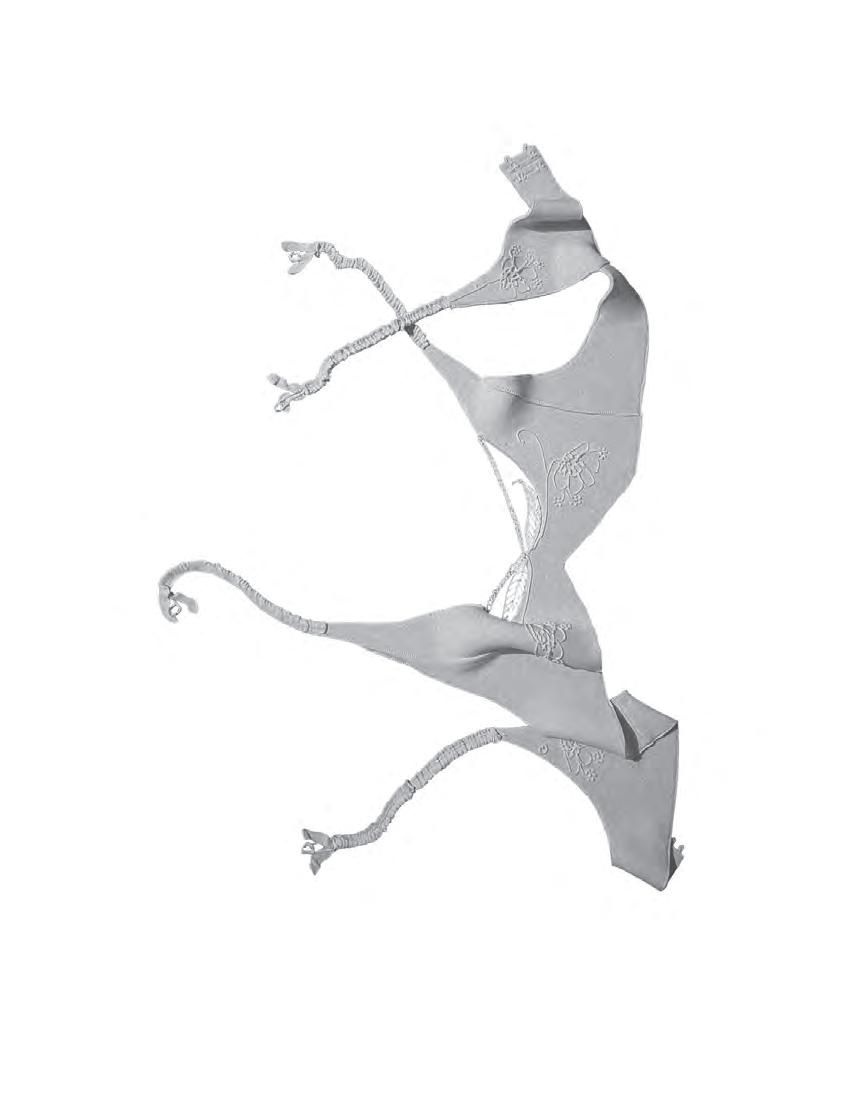

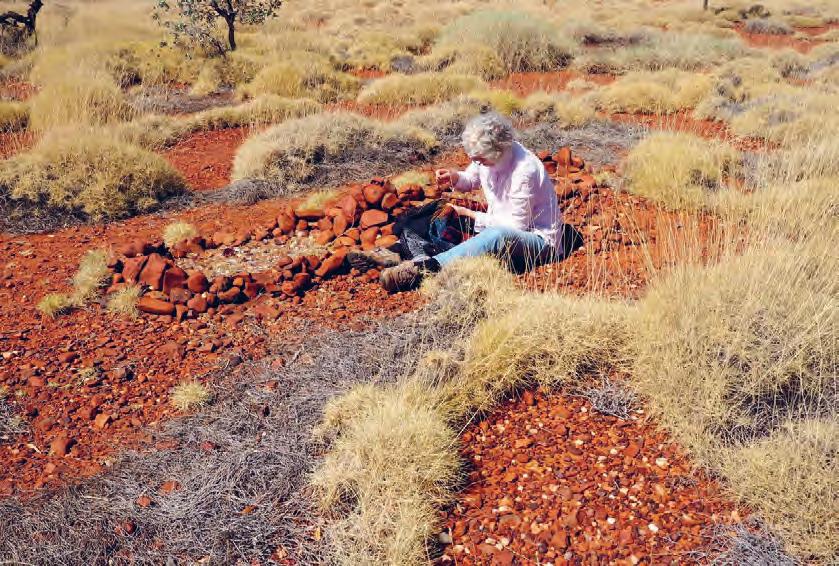
LOCATION: STIRLING ESTATE
YEAR OF BIRTH: 1949
PRIMARY MEDIUM/S: 2D AND 3D MIXED MEDIA
YEARS AS PRACTICING ARTIST: 23
Helen Seiver is mixed media artist whose work explores her role as a woman, and the essential part women have played in determining the nature, shape and structure of female roles and identity more broadly. Through that lens, Seiver’s practice endeavours to find processes with which to explore ecological and cultural issues, embracing themes of inherence and cultural inheritance. Often using found objects – all chosen as signifiers of place and era – Seiver’s works present opportunities to observe and consider notions of environment, home, and recollection.
SWAN ARTWORK/S: FORGIVENESS
YEAR: 2022
MEDIUM: FOUND JACKET, EMBROIDERED THREAD, SPINIFEX
Forgiveness stems from a four-year-long and ongoing artistic collaboration between Helen Seiver and Martu artist Desmond Taylor. The pair have undertaken several intense periods together on Country in the Pilbara, engaged in a personal exploration of Homi Bhabha’s argument that a ‘newness’ enters the world through a cultural ‘space’, which he named a ‘Third Space’. The two artists have investigated a ‘newness’; a cross-cultural way to explore healing and truth-telling via their respective art practices. Together, they are primarily concerned with the creation of a visual third space to understand and process the ‘why’ of a shared personal tragedy. Sitting on the land together, they investigate into understanding, forgiveness, and transformation. Forgiveness is Seiver’s response to and exploration of this sometimes very uneasy process; the jacket, filled with spinifex, symbolises wearing the weight of discomfort, further adorned with the intrinsic “stakeholders” of Seiver and Taylor’s ritualistic meetings: small stones, soil, and bird feathers. The work is a reflection of the unique personal contribution of both artists to a process of cultural change enacted at the individual level, and invites audiences to consider their own role in wider movements toward healing.
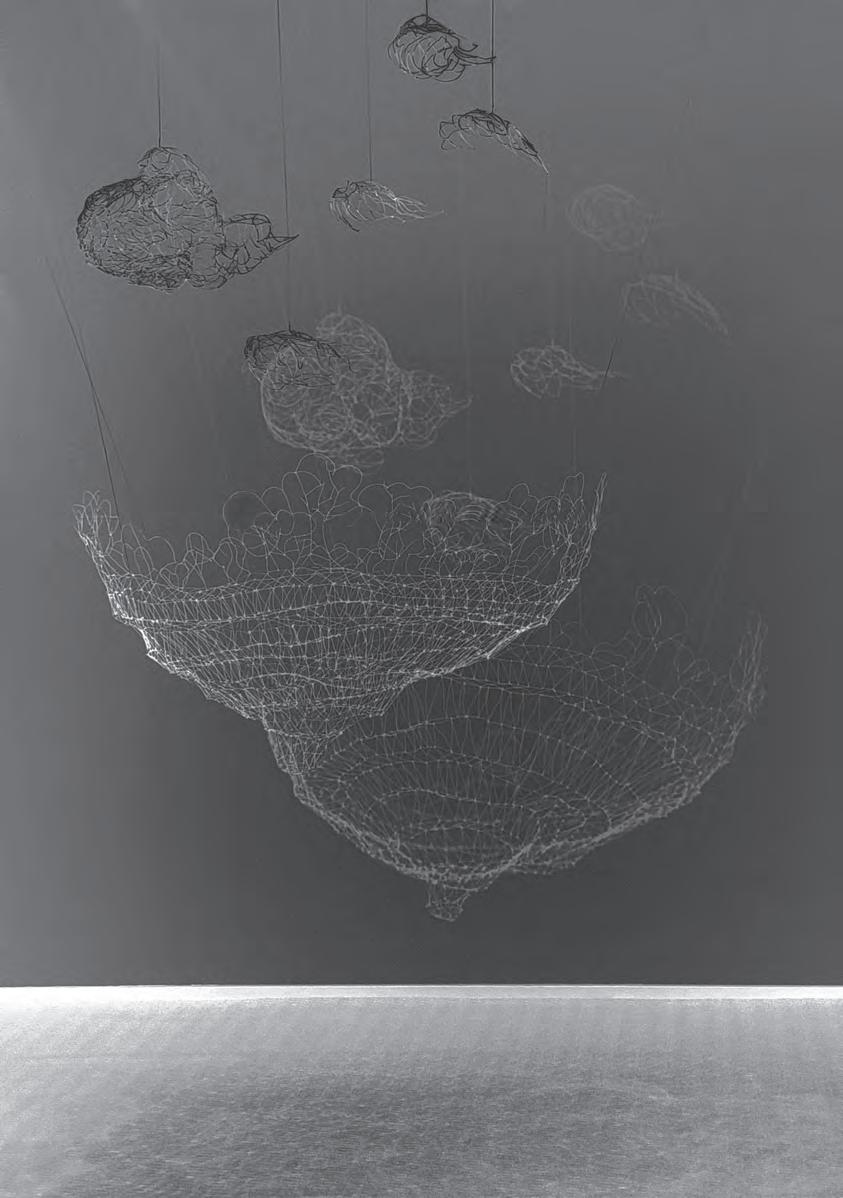
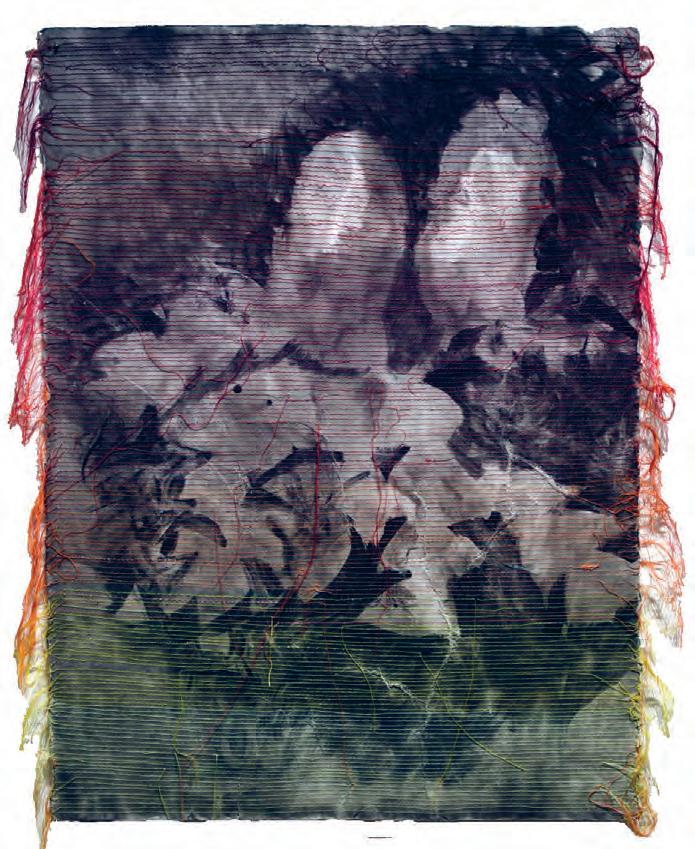
03. RIVER TWINES GALACTIC
Follow the winding trail upriver to the place of pools and brooks, where the bold spirit of the past swirls like smoke through soft valley and clear water sings with the flow of homespun enrichment. Here, light streams through Balga whorl, gilds the silhouette of kangaroo, turns leaves into living jewels.
Crisp, apple-green mornings
harvest the scent of damp blossom, and speckled geckos curl tails around sun warm stone.
The woodlands hold a festival of nectar and in the riparian twilight, frogs chant their mesmerising charm, while the river twines galactic dimensions.
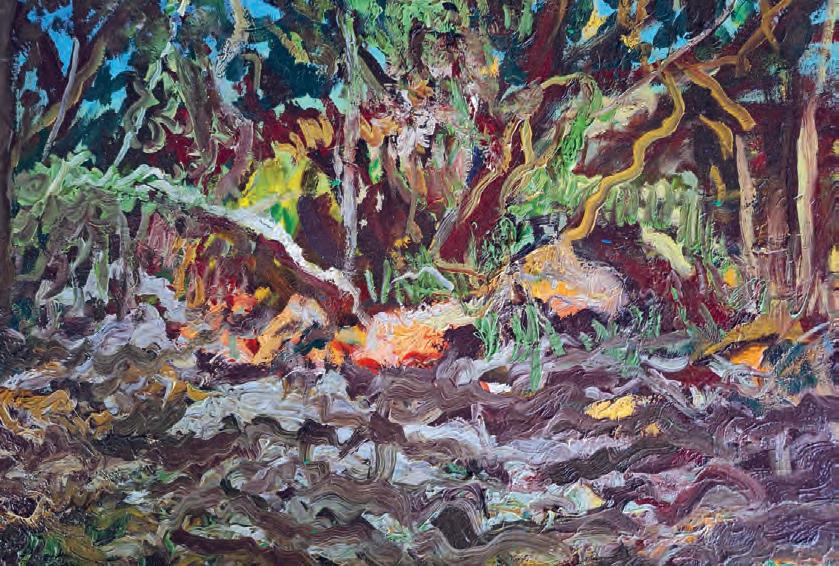
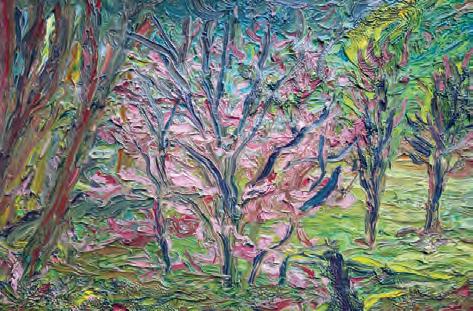
PHILIP BERRY
LOCATION: DONNYBROOK
YEAR OF BIRTH: 1957
PRIMARY MEDIUM/S: OIL PAINTING
YEARS AS PRACTICING ARTIST: 42
Philip Berry has been a practicing artist since the early 1980s. Aside from a brief sojourn to Melbourne, he has based his life and practice in Donnybrook for the past decade. Since 2018, he has had an increased focus on painting, working in the plein air tradition: immersing himself in nature, his greatest inspiration. Working in this way in observation of the same site across a period of years, Berry combines techniques of landscape painting and abstraction in order to try to understand and render it more wholly. He has produced a significant amount of work in this time, showing stylistic changes and evolutions across the period. He says: “I’m enjoying painting more than ever these days and my muse is still the river and surrounds in Donnybrook. I feel now is a good time to showcase a group of my latest works.” Berry graduated with a Diploma of Fine Art from the Claremont School of Art in 1982. He has exhibited widely in Western Australia and has been included in group exhibitions in Adelaide and Sydney.
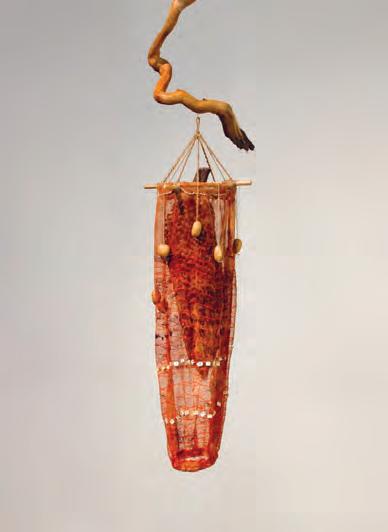

SANDRA HILL
LOCATION: BALINGUP
YEAR OF BIRTH: 1951
PRIMARY MEDIUM/S: PAINTING, COLLAGE, SCULPTURE, INSTALLATION
YEARS AS PRACTICING ARTIST: 40+
Sandra Hill is a Menang/Wadandi/Pibulmun/Ballardong Noongar woman who is dedicated to telling stories of Aboriginal resilience, culture and identity through her art. Her distinctive paintings depict scenes from her and her family’s experiences as survivors of the Stolen Generation, and the injustice of living under Western Australia’s Native Welfare regime throughout the mid-to-late 1900s. Hill and her three siblings were the third generation of their family to be taken away and placed into institutions. She lived at the notoriously cruel Sister Kate’s for three and a half years before being fostered by a white family, not reconnecting with her birth mother for some 27 years.
Hill’s well-known Home-Maker series comprises paintings of typical domestic scenes of white Australian life, in which she re-centres an Aboriginal yorga (woman) wearing a booka – a traditional kangaroo-skin cloak. The yorga is detailed in bright colour and stares directly at the viewer as the other figures – painted in washed-out grey tones – revolve around her. These artworks are intensely personal, with many drawn from specific memories of Hill’s own childhood and the experiences of her mother and grandmother, but they also reveal the broader dynamics of past assimilation policies.
Her more recent works have refined her installation oeuvre by combining gathered organic materials from Country and fabricated material to formulate stories from her past. These works reinforce Noongar cultural practices and representations. Hill’s use of natural materials is important not only as a means to reconnect to Country but as an educational tool for younger generations; a reminder of their deep time ancestral connections.
Hill is an important public artist and a community leader both in the arts and culturally. She is a board member of Wadandi’s Undalup Association and believes deeply in the power of art to reconnect Aboriginal people to their Country. She says: “Art gave me a voice, which made me strong, it helped to guide me back home, back to my family, my people and my community.”
SWAN ARTWORK/S:
TITLE, YEAR: QUINNING / ZAMIA PALM, 2017
MEDIUM: MARRI / BALGA AND ACACIA RESINS, COTTON MUSLIN, SHELL FRAGMENTS, LINEN AND COTTON THREAD, METAL, WOOD, HEMP STRING
TITLE, YEAR: JENNA / DANCE, 2017
MEDIUM: NATURAL OCHRES, OIL PAINT ON WOODEN PANEL
TITLE, YEAR: THE ARRIVAL, JANGGA YUCKI – WHITE SPIRITS STAYING, 2017
MEDIUM: OIL PAINT ON STRETCHED LINEN
TITLE, YEAR: KALLEEP – ONE’S OWN COUNTRY; HOME FIRE, 2017
MEDIUM: MARRI, BALGA AND ACACIA RESIN, SEA GRASS BALLS, COTTON MUSLIN, HEMP TWINE, WIRE, WOOD, SHELL FRAGMENTS, LINEN / COTTON THREAD, MARRI BARK, ACRYLIC PAINT, FEATHERS, HANDMADE PAPER
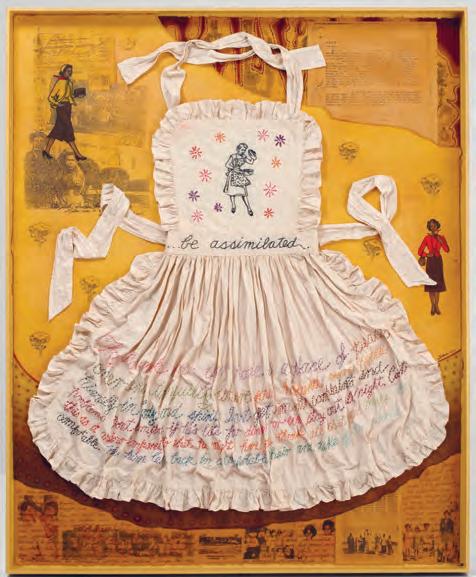
Sandra Hill, Home-maker # 4 , 2010. Oil on canvas, 91.4 x 76.2
cm. State Art Collection, The Art Gallery of Western Australia.
Image courtesy the artist.
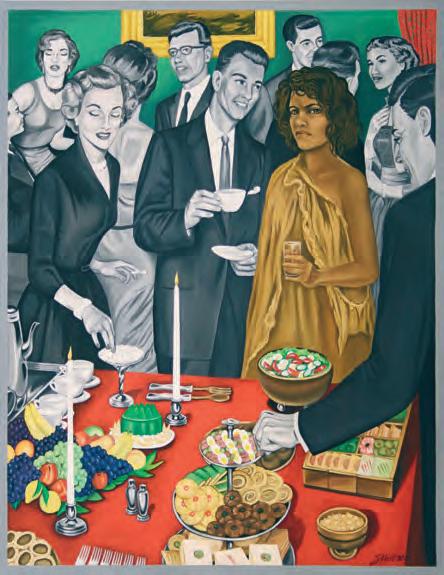
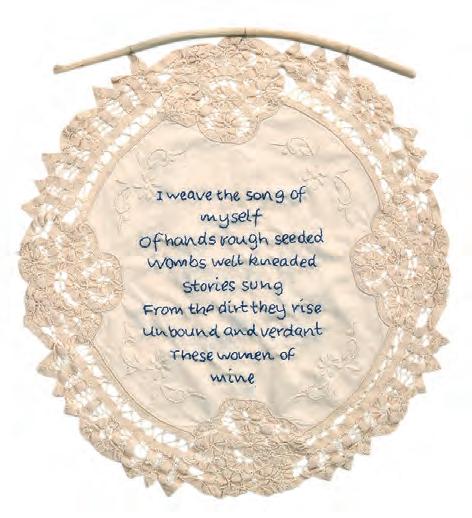
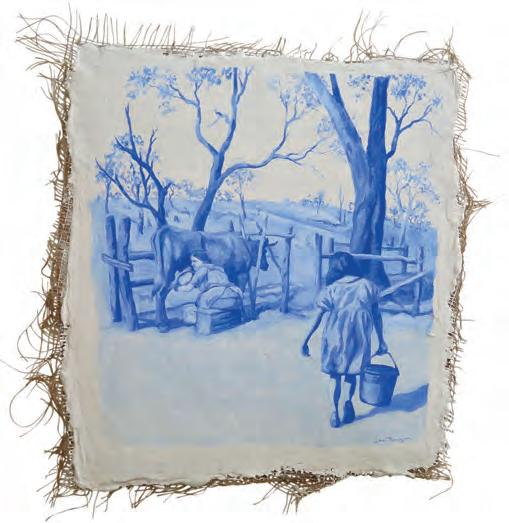
LOCATION: BOYUP BROOK
YEAR OF BIRTH: 1970
PRIMARY MEDIUM/S: PAINTING, SCULPTURE, MIXED MEDIA
YEARS AS PRACTICING ARTIST: 30
Lori Pensini (b. Narrogin, Western Australia) is a painter whose work is an exploration of self, identity, belonging, and the artist’s family history. Pensini spent her early childhood on her family’s farm at Yilliminning in the Wheatbelt, and her early adult life jillarooing on her husband’s family’s cattle station, Wyloo, in the Pilbara. She now farms with her husband on their regenerative agricultural property in Boyup Brook, where her studio is located. Pensini’s work is illustrated directly from her environment, creating documentations of her response and relationship to landscape. Her work also often draws on or depicts the stories and memories of her family, which has both Indigenous and non-Indigenous members – reflecting on complex shared histories and varying experiences in the context of rural settler-colonial mythology. Recently, she has also been exploring the botanical composition of her surroundings in more detail, creating a coded visual language through the use of flowers as symbols for personality traits.
SWAN ARTWORK/S: THE SONG OF MYSELF YEAR: 2023
MEDIUM:
OIL WITH WOOD, WATTLE, HESSIAN, MEADOW HAY, HORSE HAIR, CLAY, BINDER, GESSO
An exploration of matrilineal memory, The Song of Myself is a self-examination of the artist’s place – within her family, within shared histories – and of the environment that has imprinted itself on her identity. Scenes typical of early settler life in the Western Australian wheatbelt – in which Pensini has depicted women from her family – are painted onto natural materials, engaging questions about the simultaneously constructive and destructive relationship between (wo)man and land, particularly in the context of farming. This is an ongoing investigation in Pensini’s work.
She says: “I recall as a child our old farmhouse, a derelict timber ruin with crumbling walls of ill-fashioned daub, well on its way to returning back to the earth before we moved in. Here, I regenerate this memory, like my family did that house, rebuilding it from the earth. Through this, I observe the similar nature of the environment and the mind, the memory –both are metamorphic and perishable. I recall also the yard and surrounding paddocks were a trove of ‘fragmented artefacts’; scattered remnants of old plates, ceramics and vessels were tiny windows of curiosity into the lives of people long forsaken. In this work I build from the concept of the fragment, chronicling a collective of inherited memories and fusing them into ultramarine blue scenes likened to Wedgwood earthenware of the 1700s; a prominent aesthetic from my childhood. These are abstractions of memories, but making them is a form of trying to remember and also see anew.”
A CONSTELLATION OF DUSTY ROADS
DR. MICHAEL BIANCO DIRECTOR, BRAG
I’m on a back country dirt road, deep into a remote part of Western Australia’s South West. Driving in a converted van, I’ve come equipped with a smartphone, a SIM card in my laptop, a solar panel with a lithium battery, a portable refrigerator, and two jerry cans of spare diesel. I rarely have any reception, let alone more than one bar. GPS offers the promise that this venture is possible, but the backup set of vague scribbled directions assure that I will get to my destination. I’ve come a long way out into the bush, with nothing but gumtrees and sheep to account for, but I have faith that what I’m looking for will be found at the end of these dusty dirt roads. I’m not interested in art with a capital ‘A’. I’m on the lookout for signs of human creativity; any form of it. I’ve seen a lot of work so far: plein air oil paintings subject to the violence of climate in the absence of a stable studio; graphic representations of endangered marine life; experimental geometric images made from entirely environmentally-friendly materials; reclaimed family objects altered to facilitate a process of reconciliation, forgiveness, and healing of the land. As the van jostles over the rocks, and my thoughts about this exhibition with it, I reflect on the fact that my rhizomic work is the nature of practice for a regional gallery curator based in one of the most isolated parts of the world, and I wonder if it’s indicative of a new socioeconomic reality.
Historically in the West, many have come to believe that art of any merit is only created in major urban environments; cities like Paris, New York, London, Berlin. But in recent decades, with cities such as Shanghai, Mexico City, and Cape Town moving to the fore as major centres for artistic production, it has become clear that the art industry (and the market by extension) is giving way to more diverse perspectives, and that the model of a centralised Western artworld has been dismantled into a more fractured global form. As part of this shift, artists are increasingly moving to the periphery –to spaces in rural environments where the peace and quiet of country life (and the cost of living associated with it) is highly alluring to artists who want to focus on their work. While artists such as Claude
Monet in Giverny, Jackson Pollock at the far end of Long Island, or Agnes Martin in Taos are historic examples of regional practices, more recent artist enclaves such as Marfa, Texas (home to major international artists such as Christopher Wool and Charline Von Heyl) demonstrate how “far out” an artist can be while still being active at the centre of the international art world.
While the prospect and realities of “post-urbanism” have certainly been a common discussion among academics since Kelbaugh’s introduction of the term in the early 2000s, the lockdowns and mandated distancing of the Covid years seem to have forced the global hand of how we operate as a society, and how we conceptualise of “the centre”.1 Following the pandemic, real estate markets indicate a major migration to regional areas, with many employees actively taking on remote work as their new norm. Tech cities like San Francisco have all but been abandoned by workers who have embraced the new moniker “digital nomad”, with many seeking refuge in smaller towns with more open spaces, or the opportunity to travel internationally while still being able to work. The dematerialisation of work is creating a new division of labour, and as Jacques Derrida prophetically once said, “The centre is not the centre.”2 The new normal is nothing is normal anymore.
As a curator, I also see that what applies to web-empowered labourers is equally applicable to artists. Increasingly, artists identify as working in multiple international locations concurrently, practicing as multinationals with several passports, represented by galleries on numerous continents, and exhibiting their work with great success in locations many have never seen or heard of, or in languages one may be unable to read or pronounce. The idea that there are geographic “centres” of the art world, let alone urban Western ones, is, if not entirely dead, at least only relevant to those who conceive of themselves as being inside them. But in the absence of centres, the question is, what remains for the arts?
1.
1.
Douglas Kelbaugh, Repairing The American Metropolis (Seattle, WA: University Of Washington Press, 2002).
Douglas Kelbaugh, Repairing The American Metropolis (Seattle, WA: University Of Washington Press, 2002).
2.
2.
Jacques Derrida, “The Decentering Event In Social Thought,” in Social Theory: The Multicultural And Classic Readings, ed. Charles Lemert (Westview Press, 1999).
Jacques Derrida, “The Decentering Event In Social Thought,” in Social Theory: The Multicultural And Classic Readings, ed. Charles Lemert (Westview Press, 1999).
On the one hand, one could say there’s nothing but utopian opportunity. The dream of liberation from dense and polluted urban centres, riddled with crime and high costs of living, can now be realised, and the exchange for the bucolic country life where working space is cheap and abundant should now be firmly in place. But in reality, this exchange comes at a great price: the isolation. While some artists do well in an isolated context, many, if not most, suffer. In my own experience as an artist and curator who has spent half my life working regionally, and based on the conversations I’ve had with other artists in this region, the South West can offer a particularly intense flavour of isolation.
As any biologist will tell you, we are a social species. As a result, everyone in the arts, no matter how independent, needs a connection to the broader arts community. Our work necessitates that we maintain active relationships with our network of peers – makers, curators, and educators – to foster continued growth in our practices, and to continue on our creative paths. While we may think of ourselves as self-sufficient makers working on a literal frontier, being part of an expansive global community both affirms and validates our work as legitimate and necessary, while at the same time providing fuel to take new directions as regional cultural producers. But given the boundaries and complexities, is a regional practice truly sustainable? How can one exist remotely while practicing within a globalised centrality?
Certainly, the Internet promises to facilitate the utopian dream. One can be connected virtually to a community through Zoom meetings, Slack communities, and Microsoft Teams studio visits –all interactions normalised and made more fluid by the forced conditions of the Covid years. But we all know FaceTime is never a total substitute for sharing physical space with another body. To a regional arts worker, being physically present with our community is vital, for if nothing else, we receive the gift of having someone bear witness to that which we have created in our solitude, and the tremendous effort it has taken to make it possible.
Working in regional and remote settings also means arts workers lack the facilities and resources readily available to their urban counterparts. While we may be romantic about the past, the truth is even Monet and Pollock had direct roads to Paris and New York in their prime. For those of us working regionally in Western Australia, we are not only isolated from Perth, not only isolated from major Australian centres like Melbourne and Sydney (or even closer cities like Singapore), but truly and completely isolated from the rest of the world. As former WA Premier Mark McGowan once so boldly proclaimed, Western Australia is “an island within an island”, and all too often I feel the South West is yet another island in that ever-shrinking and replicating archipelago. While programs like the Open Borders Regional Visual Arts Summit offer vital opportunities for the regional arts community to connect, the fact is there simply aren’t enough opportunities for regional practitioners to feel seen and heard. This is why regional survey exhibitions such as South West Art Now are so vital; not only for the select artists chosen for the exhibition, but for the broader arts community of the South West as well.
South West Art Now (SWAN, formerly known as The Survey) is the longest-running review of contemporary art practices in the South West region. As one of the flagship exhibitions for a region that continues to produce some of the most significant artists in the state, the biennial survey offers a vital opportunity to reflect on dynamic recent developments in the arts, and to consider what the region is producing that is unique within a global context. South West artists continue to display a remarkable tenacity to engage the global issues of our time through their work, grappling with topics that range from climate change and ecology, to critiques of settler colonialism and late-stage capitalism.
Entitled A New Constellation, South West Art Now 2024 seeks to form new connections in this region’s artistic tapestry. In this constellation, each artist’s practice is each artist’s practice is
akin to a burning star in the night sky, collectively forming a novel celestial arrangement. Drawing these lines among practices tells a compelling story of our current moment, offering insights into the questions, concerns, and ambitions that illuminate the path of creativity in this corner of the world. My hope is that this exhibition will help us see these brave artistic practices that so often burn with no witness, and that it will provide a guide for generations of new artists in the South West who see the exhibition.
Until then, the dusty roads of the South West call on us all to continue our work as regional cultural producers, despite the challenges, and to collectively acknowledge and celebrate the great stars of our region.
From the earth, a great hump of rock swells and breaks the surface, rising up from a curtain of forest; rimmed with sand and fine greenery. A dark batholith, warm from the sun and deep in trees – jarrah and marri – miles away from the buzz of cars and human endeavour. It rises broad and dark, sparked with shimmering flecks.
Granite underpins and anchors these sandy soils, these sharp bushes and thin, seeking trees; it is exposed by the river, by rain and wind. Down its weathered spine, the rock lowers itself into the sea or a riverbed, washed clean by the sacred course of waters from sky to hill and down to the coast.
The magnetism of warmed granite holds tight those who make contact –who touch its stillness with their skin or their soul.
Somewhere near here, baked into the mottled surface of stone, are careless swathes of cadmium yellow, cobalt green and Prussian blue. Colours left behind by an artist, held to a rock beside a fast-flowing river, a winter creek, or a hissing Indian ocean. If you look closely, you will see their marks across the landscape and here, in the South West, you will see the landscape through their marks.
The granite beneath so many places in this quadrant of the state was forged from the furnace of the earth in such deep time that there is no sign of geological origins anymore, yet it often feels warm. It is seamed with sparks of silica and quartz, those crystalline things of value which are hunted down and mined. They are points of light in the dark igneous rock, a very earthbound replica of the Milky Way held captive where we stand.
We are the stuff of stars, and we stand upon the stuff of the universe: part of the exchange from one to the other, from this world to the next.
When an artist leaves their mark here, it is present on the small scale of our individual selves as a speck in the universe, in our own hidden corner of the world.
But it exists all-at-once on the grand scale too – of the timeless rock that emerges from the heart of the earth and underpins us with its magnetism. It holds us, and what we produce, all our endeavours, in place. In this place.
Creativity polarises the creator. Alone the artist finds their focus, so that what they produce looms large, is magnified under their gaze and attention. It is the only way to unlock that force inside. The scale of self and artefact might appear like the creator is looking at it through binoculars, at least for a while, in the heat of production.
It is all they can see and they look back at a shrunken world for a little while so they can focus on their own acts of formation.
There comes a point where the work is set in stone and the artefact is there for all to see. The unveiling is that point. It is on the wall of a gallery, on a plinth, published, reviewed, seen or read, and the scale of the artist becomes unstable. The individual artist might morph into something larger than we imagined; they may be a star. Or they might shrink back and hide behind the curtain. Or never be recognised.
For a while the creative artist may not be quite sure how to feel about the artefact; perhaps it is greater than they ever hoped, or perhaps it is not quite there yet. Whichever way the poles spin, the mark has been made. It is done and must be set free: the risk and the thrill of completion and exposure of the final work is a wild ride (evidence is in the creation of these written words).
The artistic life in this part of the world is usually a life of solitary endeavour punctuated by moments of audience – friend, colleague or stranger – showing curiosity or interest in the artefacts produced. It is a life idealised by some and perhaps idyllic here, where we live, but more often the artistic life is filled with ideals – ideals that sometimes fall, and sometimes rise up greater than dreams. Or a bit of both. But it all comes back to solitary endeavour. In this space the creative artist needs a rock to steady them on their journey because it is easy to feel adrift in the vastness of an unknowable future on this remote corner of earth; this quadrant of granite.
The polar south of creative solitude and the polar north of creative community and recognition pull against each other. They are forces of opposition, often in flux, and the artist must remain steadfast and anchored in order to produce their works.
In the South West we have solitude and granite and a great view of the night sky. For a creative artist, that is the best of all possible worlds for expansion and vision, even if it can also be isolating.
(Night Sky)
This moment is a unique one for the view from our outcrop because the cycle of the sun has brought fresh colours from the Aurora Australis to shimmer across our thirty-something latitudes. Like a solar blessing for the artist, sheets of greens, pinks and blues merge in an overlay across the wide, dark sky. These night-rays are a signal that nature prevails, that we are not always the thing on the easel of the universe. They are mysterious and elusive, and a sign that perhaps the eye of the heavens sees beyond our petty squabbles and overconsumption of all things; perhaps there is a reason to look up and see beyond our microcosm.
In 2024 our night sky will be overlaid with these swathes of colour, with meteor showers called Aquariid and Geminid, and with two full supermoons. The tail of newly discovered comet Tsuchinshan-ATLAS is likely to flick through in late October. Amid trains of satellites and circuiting space junk, these things will come, not just to entertain and delight us, but to remind us of greater forces at work in the universe. Much like the creative artists.
In a world cluttered by the bright lights and fanciful ideas of the worldly, it can be hard to discern where to pay attention. It seems that everything wants it from us: our attention is a commodity.
Artistic creation is about paying close attention to the work being done: the bend in the tree, the ordered segments of an insect, the variety of reds, the perfect word, the rising impulse to make.
The time has come to claim back attention for the creative works; for wonders in the sky, the rock beneath our feet and the force that laid the colours across it all.
Dedicated to South West artist Douglas Chambers (1935 – 2023).
04. BRIGHT MOON BATHES
In the place of the saltwater people where land greets sea, tall forests beckon with a breezy wave and summon the silvery hum, to flock like bees in melaleuca blossom. Here, the river is ancient enchantment, where mud and tannin breathe the sigh of solace, wrens shimmer in peppermint leaves, old timber rests
under verdant cloaks
with lichen like lizard skin.
A raw salt wind swells ocean, sculpts the face of towering cliffs and sand dunes slope away from an eroding rocky spine to reef havens where cetaceans crest and roam.
In the evening sky, a bright moon bathes in cave pools, walks softly, listens deep, for the sound and rhythm of earth.
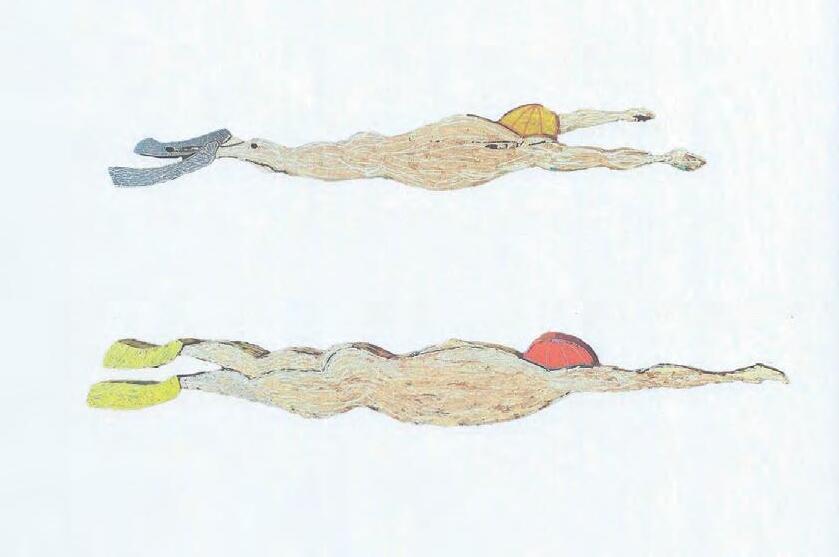
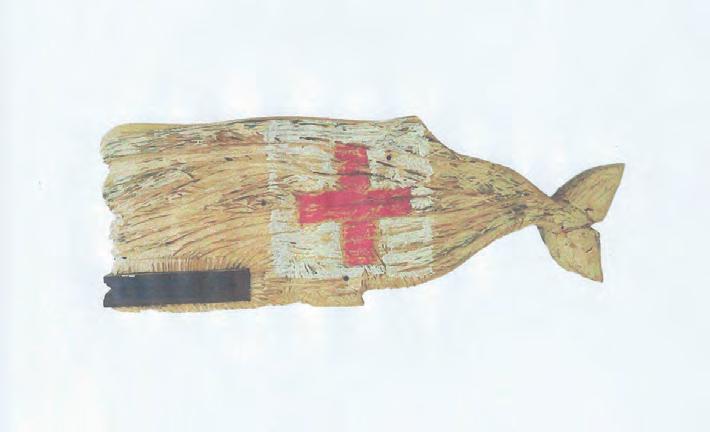
ANTHONY DEBBO
LOCATION: MARGARET RIVER
YEAR OF BIRTH: 1976
PRIMARY MEDIUM/S: TIMBER SCULPTURE
YEARS AS PRACTICING ARTIST: 25
Anthony Debbo’s practice is formed upon a lifelong fascination with art and the life of artists. He was drawn to sculpture and printmaking as processdriven disciplines – beginning with an idea, turning an idea into a drawing and then a plan, and finally turning a plan into an artwork to see what it becomes. He is interested in how artworks tend to take on their own paths; how they can reflect the artist back to themselves, even subordinate the artist to the will of the work itself. Debbo brings a great tone of whimsy and joy to his work, exploring oceanic themes that speak to rituals of place. Debbo’s works have a strong sense of narrative, often taking the form of figures, animals or objects from daily life, including whales, swimming men, flying parrots and boats. These are expressions of his interest in escapism and act as vehicles to enter foreign worlds.
SWAN ARTWORK/S:
TITLE: SWIMMING MAN NO.1
YEAR: 2023
MEDIUM: JARRAH, RED GUM
DIMENSIONS:
60 X 8 X 210 CM
TITLE: SWIMMING MAN NO.2
YEAR: 2022
MEDIUM: JARRAH, PLYWOOD
DIMENSIONS:
80 X 320 X 10 CM
TITLE: SWIMMER WITH YELLOW CAP
YEAR: 2023
MEDIUM: JARRAH, RED GUM, PAINT
DIMENSIONS:
300 X 70 X 5 CM
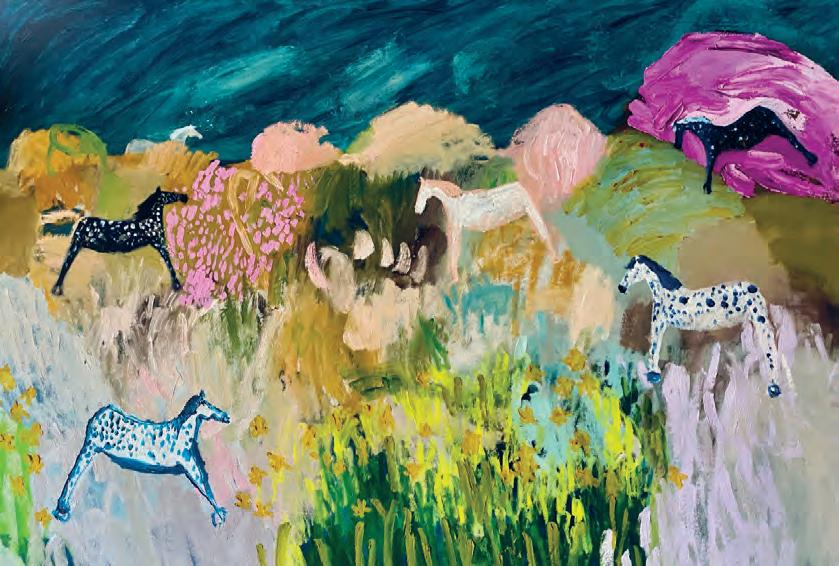
LOCATION: MARGARET RIVER
YEAR OF BIRTH: 1978
PRIMARY MEDIUM/S: OIL PAINTING
YEARS AS PRACTICING ARTIST: 5
Kate Debbo is an oil painter. Her abstracted, colourful landscapes and florals are life-affirming and joyful, rendered in a naïve, emotive and painterly style. Debbo is inspired by the beauty of her surroundings; her daily wanderings with her dog in the forest, personal memory, and adventures with her family. She often explores the symbolism of the horse within the landscape. Horses reflect domesticity but also link to a more magical world and a nostalgic look at the past, representing beings or people and standing for freedom — a playful invitation to a better world. Through her work, she seeks to capture the magic in the everyday.
SWAN ARTWORK/S: NIGHT LIFE YEAR: 2023
MEDIUM: OIL ON CANVAS
 Kate Debbo, Night Life , 2023. Oil on canvas, 194 x 134 cm.
Kate Debbo, Night Life , 2023. Oil on canvas, 194 x 134 cm.

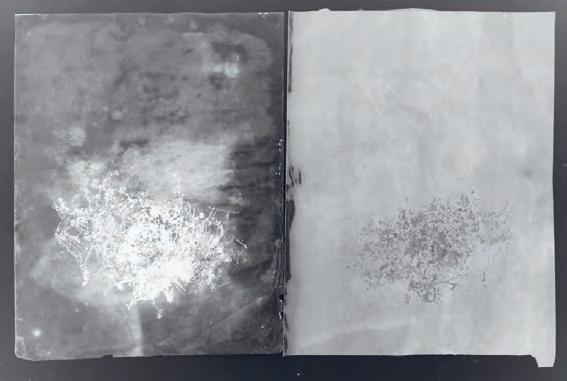
Francesco Geronazzo, Banksia Pod –Earth Series , 1 –4, 2023. Line etching, dry point and carborundum, 35 x 50 cm. Images courtesy the artist.
FRANCESCO GERONAZZO
LOCATION: MARGARET RIVER
YEAR OF BIRTH: 1984
PRIMARY MEDIUM/S: PRINTMAKING
YEARS AS PRACTICING ARTIST: 20+
Francesco Geronazzo (b. Valdobbiadene, Treviso) draws on his expertise in traditional printmaking to explore modern representations of Australian flora, simultaneously investigating aspects of colour theory and creating near photo-realist representations of vital species in his local environment. Geronazzo’s works are highly sought-after in Italy, having completed a range of significant commissions there before moving to Western Australia. Geronazzo was educated at the Artistic High School of Treviso, and later spent five months as an etching assistant at the Faculdade de Belas Artes da Universidade do Porto (FBAUP) in Portugal. He has completed the three-plustwo-year Master’s degree in graphics at the Academy of Fine Arts of Bologna and was also a printmaking lecturer there for two years. He currently lives in Margaret River, where he works for Leon Pericles and Jo Darvall, and teaches printmaking techniques at Margaret River Printmaking.
SWAN ARTWORK/S: BANKSIA POD ‘23 – EARTH SERIES (1 – 4)
YEAR: 2023
MEDIUM:
LINE ETCHING, DRY POINT, CARBORUNDUM
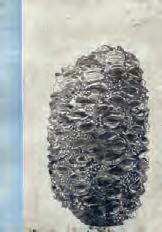
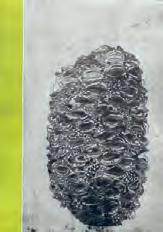

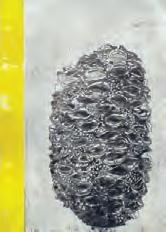

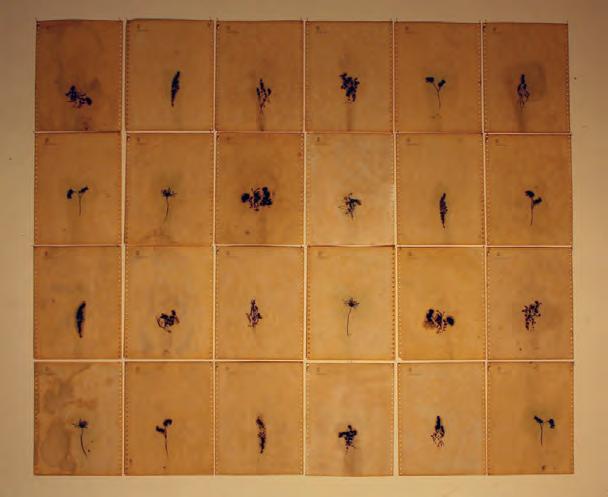
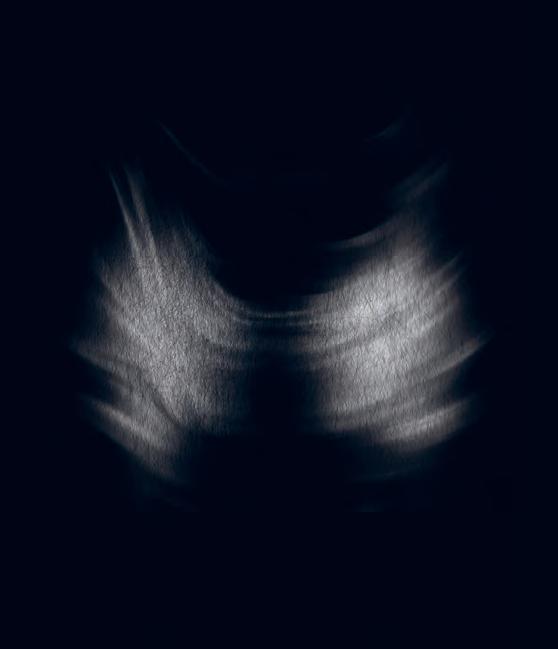

SARAH HEWER
LOCATION: MARGARET RIVER
YEAR OF BIRTH: 1979
PRIMARY MEDIUM/S: PHOTOGRAPHY, PRINTMAKING, DRAWING, MIXED MEDIA
YEARS AS PRACTICING ARTIST: 4
Sarah Hewer is an artist working across photography, drawing, printmaking and mixed media. A mapping of inner landscapes and paradox, Hewer’s practice is grounded in themes of memory, perception and vulnerability. Her work combines multiple techniques, with an intuitive and exploratory nature running throughout – be it in her large-scale botanical photographs of decaying and broken debris found in nature, or in the raw, often flame-fuelled markmaking of her abstract prints and drawings. Drawn to the use of chiaroscuro, Hewer explores boundaries between light and dark, between the visual and the emotional. Her emerging practice draws on more than 25 years as a creative, first working in moving image and later in commercial photography. She has been exhibiting publicly since 2021, and was a finalist in the 2023 Fremantle Print Award.
SWAN ARTWORK/S: IN THE QUIET NOTES
YEAR: 2023–24
MEDIUM: GICLÉE PRINT (LIMITED EDITION 1/1)

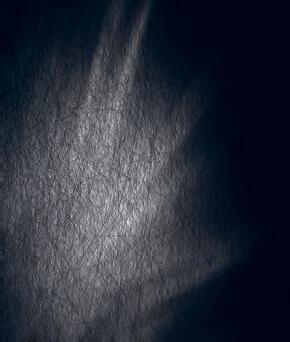
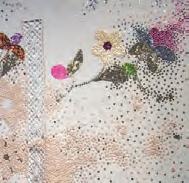
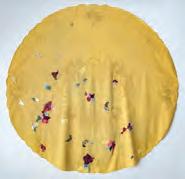
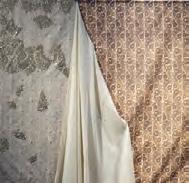
Up in the sky blue wind was chasing dreams like clouds is part of a body of work titled Blue almonds and strawberry ice cream. The series speaks of dreams, the nature of memory and longing. Blue almonds refers to a Polish phrase that translates to thinking of blue almonds and describes daydreaming
Why almonds and blue almonds at that? Historically speaking, almonds were special in Poland. They were something exotic from faraway lands, likely very expensive, too. This alone implies preciousness and a degree of difficulty obtaining whatever it is we long for.
The Polish word for blue derives from the word for sky or heaven. This is very fitting considering the nature of the colour itself. It’s elusive. What we perceive as blue is hues scattered everywhere, mixtures of other colours and reflections of light. A true blue colour or pigment doesn’t really exist in nature.
When we look into the distance we see blue at the far edge of the world. It’s the colour of things far away, of horizons, of they’re seen from here, of where we’re not. If we try to go there we won’t find it – it will have retreated even further into the distance. It is the colour of desire and yearning. Of something out of reach, maybe forever.
Strawberry ice cream refers to a treat my father had growing up as a poor child in postwar Poland. He has never forgotten the taste and has been trying to find it again ever since.
Our recollections are enduring, yet in general they’re fragmented, inaccurate and elusive. There are absences, gaps and voids. Partly, because time moves forward relentlessly. And partly, because memory contains both the processes of remembering and forgetting.
The shadows that my works create hint at that. They’re a presence in lieu of what informs them. They’re like an agent for remembering, reminding us of what is lost. They speak of the yearning for a physical presence of things that exist only in our past or as a desire.
– Elisa Markes-YoungElisa Markes-Young, Strawberry ice cream , 2022. Hand embroidery, sequins, bugles, appliqué on silk organza and tulle, approx. 120 x 120 cm. Image courtesy the artist.
LOCATION: MARGARET RIVER
YEAR OF BIRTH: 1965
PRIMARY MEDIUM/S: TEXTILE
YEARS AS PRACTICING ARTIST: 20+
Born in Poland, Elisa Markes-Young reached adulthood in Germany, identifies as ‘displaying many supposedly German traits’, and responds ‘German’ when asked about her nationality. Yet, in many ways, she feels Polish, and her work explores her continued sense of disconnect, of living in-between. Working mostly with textiles in a slow, meditative way, Markes-Young examines the question of what and where is home, and the concepts of hand-me-down identity, memory and belonging. The time and effort that goes into creating elaborate pieces by hand is the measure of affect and emotion and gives her work meaning.
Markes-Young has been exhibiting regularly since arriving in Australia. She has won multiple art awards including the inaugural Mid West Art Prize. Her work has been shown repeatedly in the Bunbury Biennale and the Tamworth Textile Triennial, and was published in Mary Schoeser’s Textiles: The Art of Mankind (Thames & Hudson, 2012). It is also represented in the Royal Perth Hospital Art Collection, Tamworth Regional Gallery Art Collection, Wangaratta Art Gallery Collection, various Western Australian council collections as well as private collections in Germany, the UK and Australia.
SWAN ARTWORK/S: UP IN THE SKY BLUE WIND WAS CHASING DREAMS LIKE CLOUDS
YEAR: 2023
MEDIUM: SEQUINS, BUGLES, PAPER, APPLIQUÉ ON TULLE
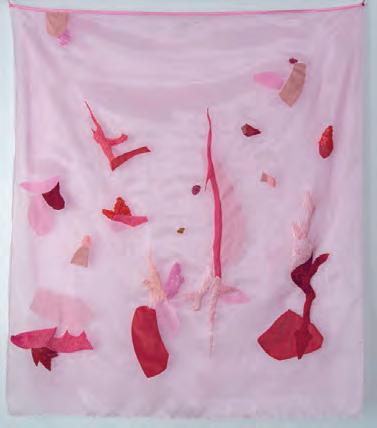
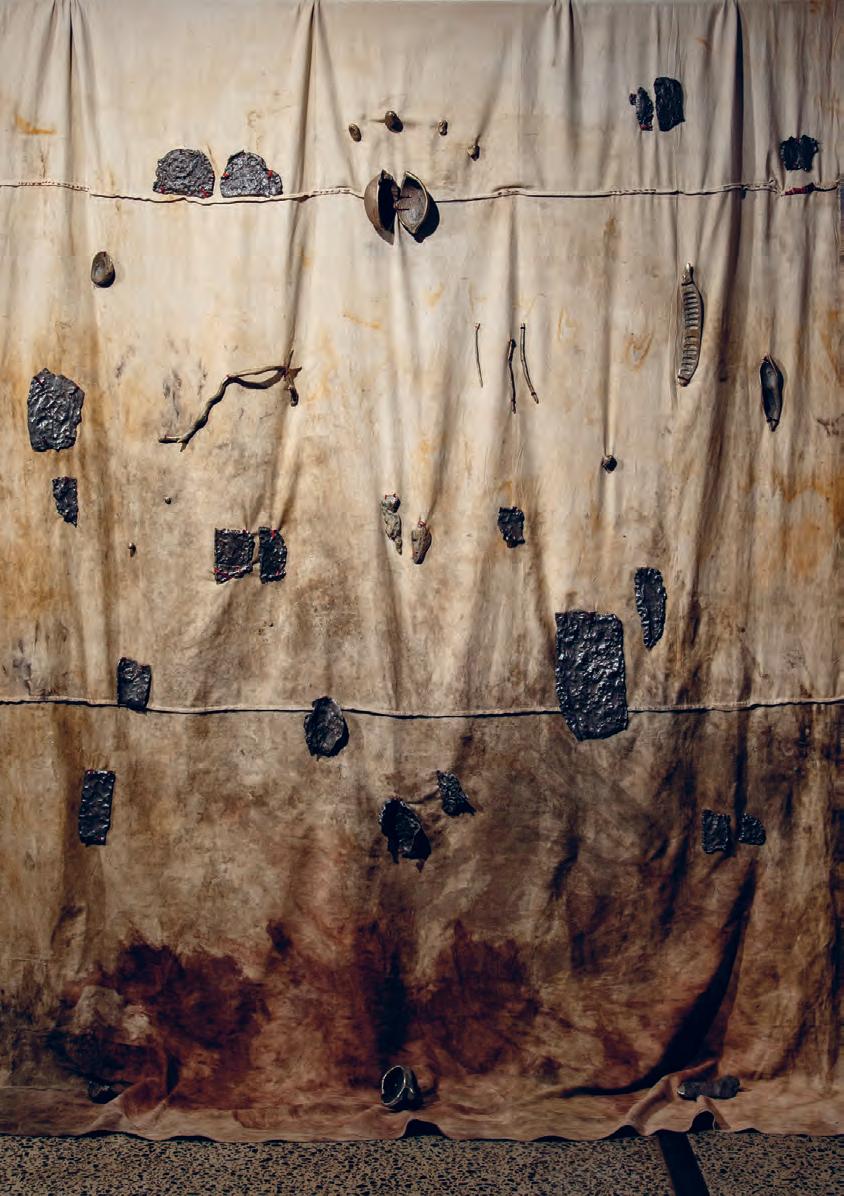
LOCATION: PERTH
YEAR OF BIRTH: 1990
PRIMARY MEDIUM/S: DRAWING, PAINTING, ASSEMBLAGE, INSTALLATION, PERFORMANCE, SOUND, FILM
YEARS AS PRACTICING ARTIST: 15
Kate Alida Mullen is an artist, curator and writer currently undertaking doctoral research on deep listening practices as modes of navigating colonised space. Rooted in a background of drawing, painting and assemblage, Mullen’s multidisciplinary art practice encompasses installation, performance, textiles, printmaking, sound, film and more. Varied media are drawn upon to document bodily, durational enquiries into the layered histories of places, with a particular interest in what constitutes the ‘sacred’, as well as the relationship between physical and psychological experiences of space. Mullen’s work is an ongoing exploration of the ancient and innately human practice that is deep listening – full body receptivity to one’s environments – and how this may be adapted within the urban-industrial contexts of the modern world. Her enquiries are foremost personal reckonings with how to be more ‘fully human’ at a time when our nervous systems’ abilities to access states of deep listening are increasingly compromised. Mullen is also engaged in artsbased consultancy work across Australia, working in close partnership with communities, particularly remote Aboriginal communities. Her diverse projects are underpinned by an interest in the capacity of art to bring about embodied states of engagement with place and support natural healing processes.
SWAN ARTWORK/S:
YEAR:
DRAWING WITH SOUND: MARAPIKURRINYA / PORT HEDLAND
2022–23
MEDIUM: SOUND INSTALLATION, MIXED MEDIA DRAWINGS ON PAPER
Drawing with Sound: Marapikurrinya / Port Hedland is a site-responsive, community-engaged project fostering creative collaboration between the residents of a remote Pilbara mining town, its ceaseless industrial infrastructure and the ancient Kariyarra landscape it’s situated upon. The work weaves together field recordings gathered in and around the Port, both above and below its waterways, along with audio recorded during workshops with a broad representation of the Port Hedland community, crafting a ‘sonic portrait’ of place – one that expresses both the deep, geological timespans and current cultural-industrial realities alive and co-existing within this charged remote location. Alida Mullen has engaged fellow South Westbased practitioner, sound designer Simon Walsh, in the realisation of this experiment in deep or full-bodied listening to ecologies within heavily industrialised, post-colonial contexts. Offering an alternative to pictorial, two-dimensional representations of landscape, this body of work combines new media with performative, drawing-based practices to bring about a more inclusive, multisensory and embodying portrayal of a distinct contemporary Australian location.
The artist would like to extend special thanks to Kariyarra Elder and Chairman of the Kariyarra Aboriginal Corporation Patricia Mason for her generous cultural insights and guidance during production.
This project has been made possible through the Town of Port Hedland’s Community Partnerships Grant program, with additional support from The Junction Co. Inc.
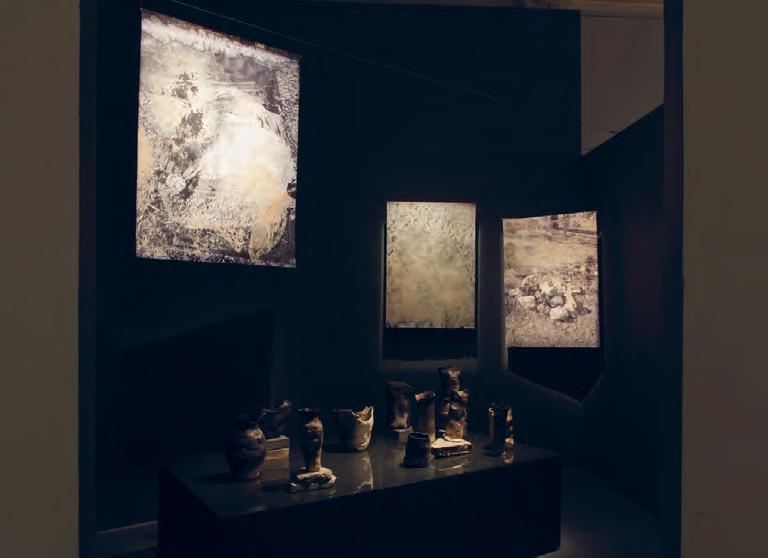
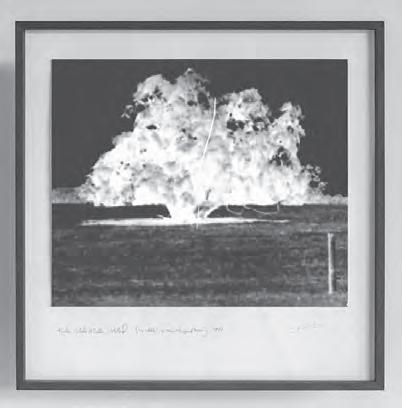
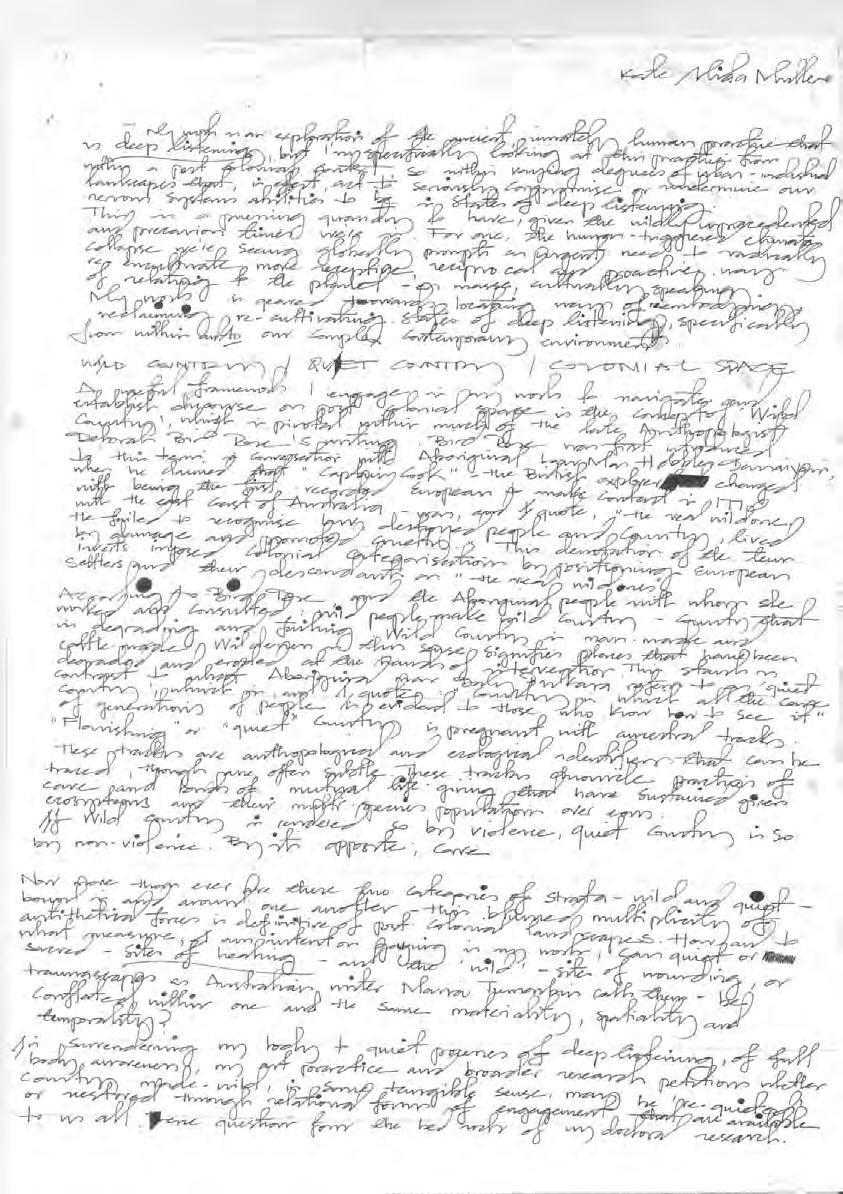

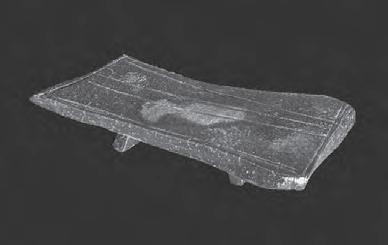
CHESTER NEALIE
LOCATION: AUGUSTA
YEAR OF BIRTH: 1942
PRIMARY MEDIUM/S: WOODFIRE POTTERY
YEARS AS PRACTICING ARTIST: 60
Chester Nealie has achieved worldwide renown for his enthusiastic embrace of woodfired ceramics. Born in New Zealand, he began potting in 1964 after meeting visiting potters Shōji Hamada, Takeichi Kawai and Michael Cardew. After a visit to the World Crafts Conference in Japan in 1978, where he saw wood fire kilns in Shigaraki and Bizen, Nealie built his first Anagama kiln – an ancient type of pottery kiln brought to Japan from China via Korea in the 5th century. He began to specialise in wood firing, travelling widely and becoming an international authority in the field. His wheel-thrown vessels have a basic classical form, but are handled and altered to give them an individuality that combines well with the spontaneity of flame in the firing. His pots show the rich effects of flame and ash during prolonged firing at high temperatures. He has lectured, built kilns and conducted many firings in New Zealand, Australia, Japan, USA, Korea and Norway. He is represented in many collections and is twice winner of the Fletcher Challenge International Ceramic Award. Nealie is also published in numerous books and magazines both as a writer and subject, in particular his recent monograph Chester Nealie – Etched in Fire (Ron Sang Publications, 2016). His work shows the freedom and joy in hand-making combined with the magical spontaneity of flame. Nealie moved to Australia in 1991, working from his studio at Goanna Ridge, Gulgong, NSW where he had three woodfire kilns. In 2022 he relocated to WA and is establishing his workshop in Augusta.
SWAN ARTWORK/S:
TITLE, YEAR:
MEDIUM:
LARGE BOTTLE, 2023
WOODFIRED STONEWARE, MULTI-FIRED: FIRST FIRING SALT GLAZED CELADON, SECOND FIRING TENMOKU OVERGLAZE, SHELL EFFECTS. FIRST FIRED IN CHESTER’S MULTI-CHAMBER KILN AT GULGONG NSW, NEXT FIRED IN TEAM FIRING IN IAN DOWLING’S SALT KILN, MARGARET RIVER WA.
DIMENSIONS: 48 CM HEIGHT
TITLE, YEAR:
MEDIUM:
LARGE BOTTLE, 2023
WOODFIRED STONEWARE, SALT GLAZED, SHELL EFFECTS, MULTI-FIRED. FIRST FIRED IN CHESTER’S MULTICHAMBER KILN AT GULGONG NSW, NEXT FIRED IN TEAM FIRING IN IAN DOWLING’S SALT KILN, MARGARET RIVER.
DIMENSIONS: 44 CM HEIGHT
TITLE, YEAR: SLAB PLATTER, 2023
MEDIUM:
WOODFIRED STONEWARE, SALT GLAZED SHINO WITH REED IMPRESSION, FIRED IN TEAM FIRING IN IAN DOWLING’S SALT KILN AT MARGARET RIVER.
DIMENSIONS: 34 CM LENGTH
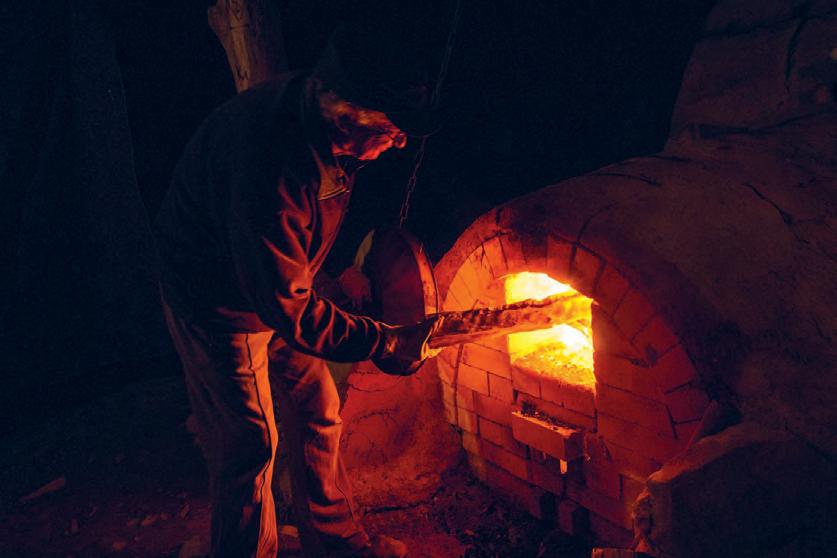
Day three firing at night,
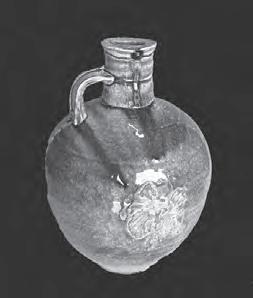
Chester Nealie, Large Bottle , 2020 & 2023. Woodfired stoneware, multi-fired: first firing salt glazed celadon, second firing tenmoku overglaze, shell effects. First fired in Chester’s multi-chamber kiln at Gulgong, NSW, next fired in team firing in Ian Dowling’s salt kiln, Margaret River, WA. 440 mm (h).
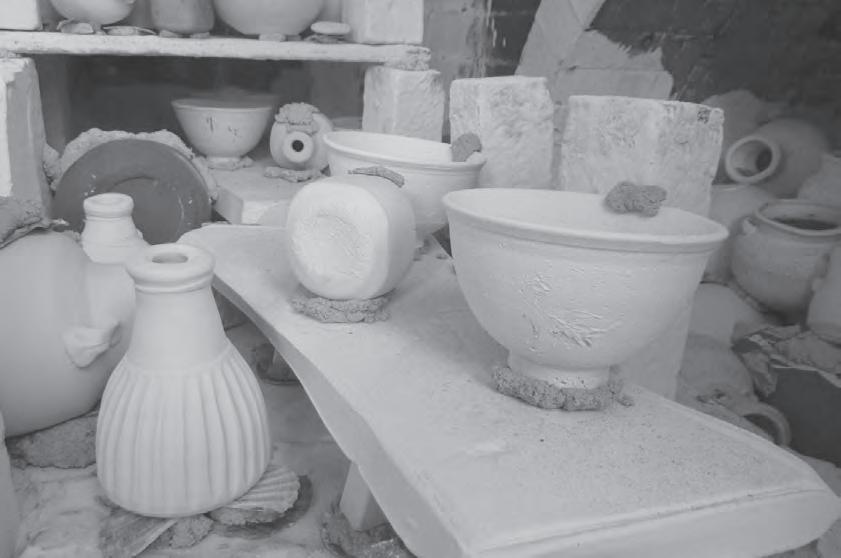

Chester Nealie, Large Bottle , 2020 & 2023. Woodfired stoneware, salt glazed, shell effects, multi-fired. First fired in Chester’s multi-chamber wood kiln at Gulgong NSW, next fired in team firing in Ian Dowling’s salt kiln, Margaret River, WA. 480 mm (h).
Photograph: Steve Williams, supplied by the artist.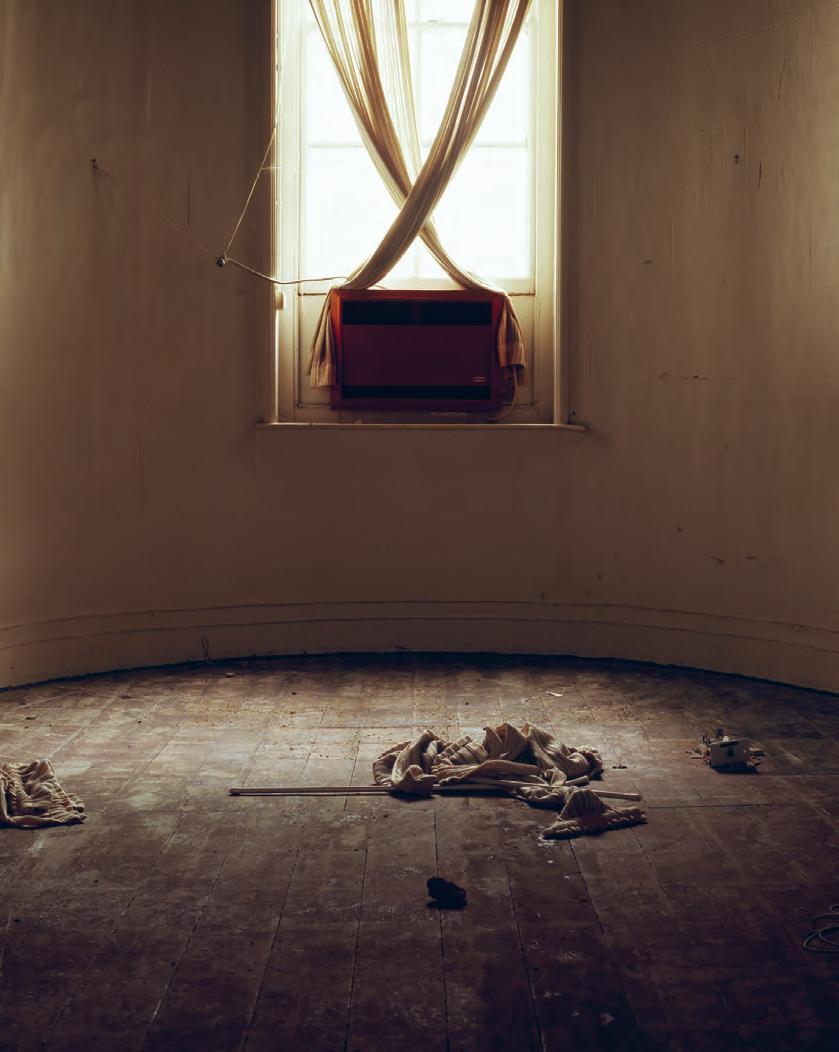
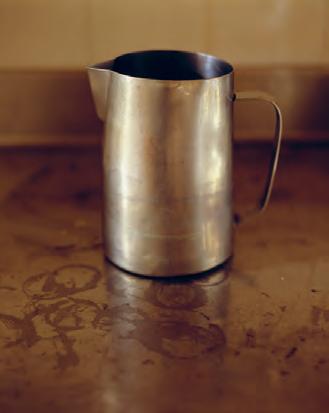
CHRISTOPHER YOUNG
LOCATION: MARGARET RIVER
YEAR OF BIRTH: 1974
PRIMARY MEDIUM/S: PHOTOGRAPHY, INSTALLATION
YEARS AS PRACTICING ARTIST: 28
Christopher Young was born in small-town New Zealand in the mid-70s. After finishing a Diploma in Applied Arts in NZ he moved to Germany in 1996, then settled in WA in 2002. He has an ongoing interest in context and coding in images, and in exploring his sensed lack of a personal cultural library. He has exhibited in NZ, Germany, WA, VIC, NSW and QLD and his work is represented in many collections, including the City of Bunbury. Young supports his practice by working in the graphic design and print industries, and also runs creative and technical workshops through his studio at No.29 in Margaret River.
SWAN ARTWORK/S: NINE, #10, #11 AND #12 YEAR: 2023–24
MEDIUM: FRAMED INKJET PRINTS
Isolation is a recurring theme in Christopher Young’s photography practice. The narrative in his work is coloured by his experiences of remoteness: from growing up in semi-rural New Zealand, to the loneliness of living in Germany with poor language skills, and, more recently, the geographic and ideological seclusion of life in regional Australia. Nine: No Vacancy utilises Young’s personal experiences as a prism to explore the pressures of inn-keeping in regional Western Australia. It is drawn from his ongoing inquiry into motel photography typologies, with a particular focus on destination postcards. He says: “In 1984, my parents decided to take up the lease of a motel on the outskirts of a small village. In the early days, they were very much dependent on heavy industry, including an oil refinery that was under construction and a local dairy factory. Once construction of the refinery was completed, bookings dropped off considerably. Mortgage interest rates rose and my parents had to take on extra jobs. Due to these pressures, my younger brother and I both worked in the motel, cleaning rooms, interacting with guests, serving food. While this phase of my life was extraordinarily stressful, it exposed me to the outside world and people with fascinating lives.”



Top: Logan Print, Riviera Motel, Nelson, NZ; and bottom: Patricia Kettler-Braine, Best Western Redwood & Pot Belly Restaurant, Vermont, USA, Dexter Press. Found postcards, published in Nine: No Vacancy , Christopher Young, volume III (self published, 2023).
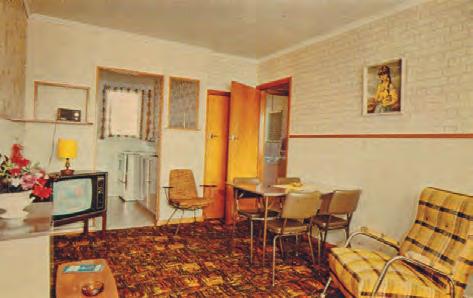
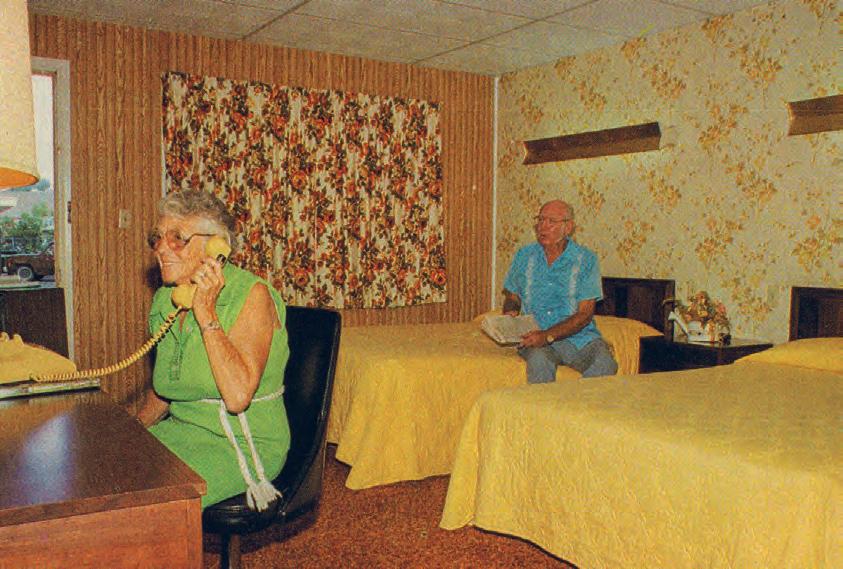
05. SILVER MOMENTS
The heart’s compass points to the place of plenty of water, returns to a primordial river and the cascading magnetism of towering trees, where echoes of deep time are inscribed on the wind. Here, light performs subtle alchemy, makes liquid baubles of sundew rosettes, glistens green tendrils, suspends raindrops like silver moments.
Beneath a eucalypt-fragrant sky strident black cockatoos call drifting white-sand mountains.
Water bodies shape life rhythms, sculpt nooks for crustaceans, furnish lush sanctuaries for phascogale and quenda.
In the embrace of loam and moss, mycorrhizal networks constellate archives of connection.



LOCATION: SMITH BROOK
YEAR OF BIRTH: 1964
PRIMARY MEDIUM/S:
JEWELLERY AND 3D DESIGN USING METALS (PRECIOUS AND SEMI) AND FOUND OBJECTS
YEARS AS PRACTICING ARTIST: 22
Louise Tasker is a jewellery artist whose pieces move beyond the decorative and toward the political, always focusing on the alchemy between material, process and meaning. She also makes large-scale sculptures that speak to climate change and ecological collapse, combining intricate metalsmithing techniques with peculiar materials like marron gastroliths, sea urchins and computer cable. Her work is about relationships and the infinite cycles and rhythms of life. She seeks patterns to be translated through technique or material, rhythms that echo a perception, a feeling, an experience; living patterns that reveal the passage of time, sometimes hinting at our mortality. She is a collector of found objects, often working with things like hair, shells, wood, bones and toys, which she might cast in metal or resin, or highlight as the integral component of a piece. Her practice is one of recycling metals and other materials; sustainability quietly appears throughout her work.
Tasker graduated from Curtin University in 2002 with a First Class Honours degree in a Bachelor of Arts (Art), majoring in jewellery and 3D design. In the same year, she won The Jewellers and Metalsmiths Group of Australia (JMGA WA Inc) top award for Artistic Concept and was a finalist in the OZGOLD Award. In 2005, she received a Barcelona Studio Residency from the Australia Council for the Arts. She has exhibited in numerous group exhibitions in Australia and overseas and has work included in the National Contemporary Wearables Collection. Her work is published in Gold and Silversmithing in Western Australia: A History by Dr Dorothy Erickson (UWAP, 2010).
SWAN ARTWORK/S:
THE GROUP OF TWENTY VS THE HUMAN MOBILITY PATHWAY
YEAR: 2024
MEDIUM:
TWENTY SEA URCHINS, COPPER AND POLYESTER BRAIDED CABLE, ACRYLIC, STERLING SILVER (NECK PIECE); SEA URCHIN, CORK, STERLING SILVER, CO-AXIAL CABLE (RING)
DIMENSIONS: 12 X 8 X 200 CM (NECK PIECE); 2.5 X 2.5 X 7.5 CM (RING)
The Group of Twenty vs The Human Mobility Pathway is a juxtaposition highlighting the effect of global economic policies on small island nations. Comprising 20 ethically sourced urchins (usually found in the English Channel, eastern Atlantic and along the eastern Pacific coast) secured with communication cable, the neck piece references the notion of rotating power; the way in which developed nations shift and ultimately avoid their universal responsibilities. Meanwhile, the ring is a reminder of the human hand in global warming and a representation of Prime Minister Anthony Albanese’s promise of residency to Tuvalu citizens displaced by climate change, which offers ‘a special human mobility pathway’. Together, the two works emphasise the real costs of climate change, and are intended as a call for action.
06. GALAXIES IN GRANITE
Across the span of southern sky, arcs of prismatic colour herald the place of rain, where droplets swathe the forest floor, wash the tingling arms of green giants, embroider facets on morning mist. Here, light drips like crystal, pours into shadowy crevasses, finds galaxies in granite.
Metamorphic mountains rise like an apparition, loom sentinel over wind-swept terrain to rugged coastal cliffs, applauded by rushing froth and the gust of spouting sea.
River curves into inlet, black swans fold into stillness, dip ruby bills in seagrass and pelicans slowly spiral over bays of bone-white sands.
Story and memory coalesce in hallowed crescent of stone, traces of Gondwana.
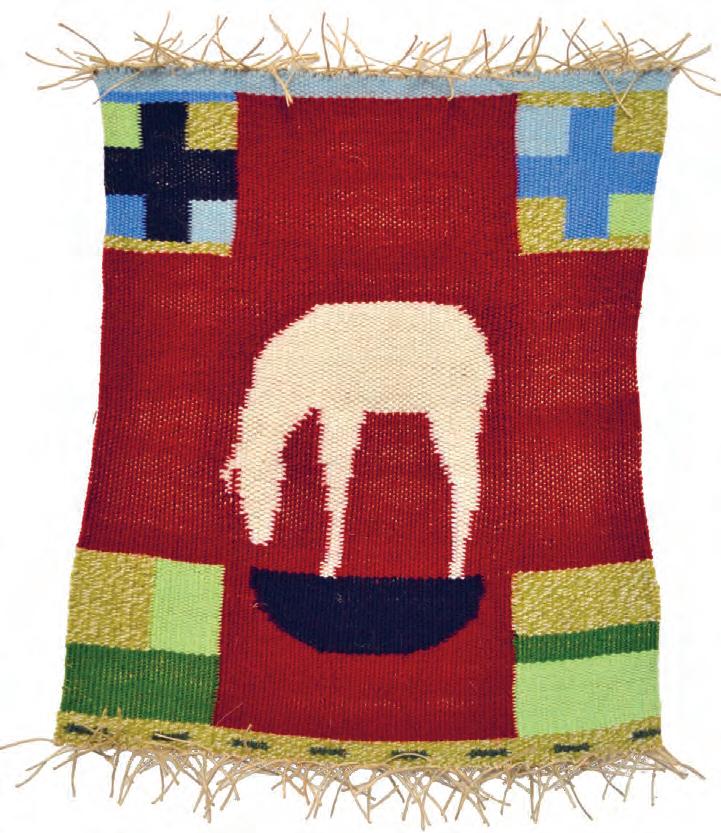
JILLIAN GREEN
LOCATION: KENTDALE
YEAR OF BIRTH: 1966
PRIMARY MEDIUM/S: PAINTING, DRAWING, TEXTILE
YEARS AS PRACTICING ARTIST: 34
Jillian Green is a mixed media artist whose work has historically referenced folk art, early Christian art and geometric abstraction. Her primary visual interest is in shape, with many of her more recent projects inspired by shapes she has happened upon in the course of daily life. This has coincided with an increasing shift away from two-dimensional and towards three-dimensional work, leaving behind painting in favour of assemblage and textiles. Her work employs various techniques that draw from home crafts and folk traditions –from drawing and weaving, to embroidery, sewing and crochet. She uses a lot of saved materials, such as wood, paper, wool, linen and cotton. Lately, Green has been working closely with her donkeys, Joseph and Frank, embedding her within an emerging field of interspecies art practice and at the forefront of global thinking about human relationships to the non-human. Born in Kalgoorlie, Western Australia, Green has a BA in Visual Arts from Edith Cowan University. Following her degree, she was invited to exhibit with The Church Gallery (which later became Turner Galleries), and continued to exhibit with them until their closure. She has also done studies in theology and Buddhist philosophy. Her work has been shown at The Melbourne International Art Fair (2006, 2008) and in The Role of Abstraction in Contemporary Art in Istanbul, 2012. In 2005, she received ARTSWA grants for a residency/exhibition at the Benedictine Monastery in New Norcia and another for a project that involved walking the Camino de Santiago pilgrimage. In 2014, she participated in a residential icon painting course at The Emmanuel Monastery in Bethlehem. Her paintings and drawings can be found in the collections of Murdoch University, Edith Cowan University, Sir Charles Gairdner Hospital, Royal Perth Hospital, Cruthers Collection, St John of God Healthcare, King Edward Hospital and New Norcia.
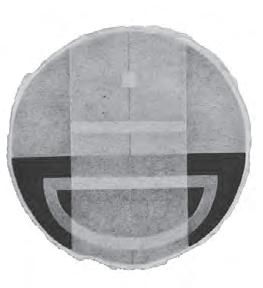
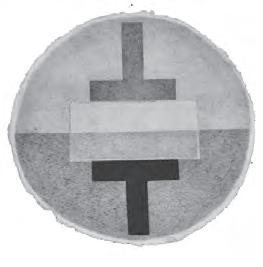
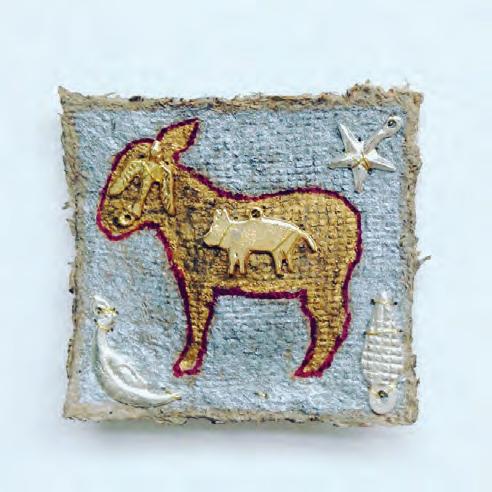

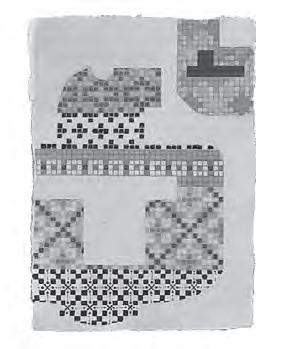

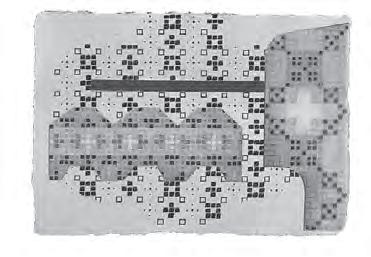

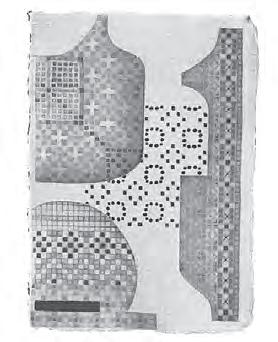
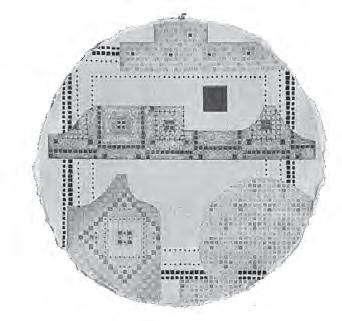
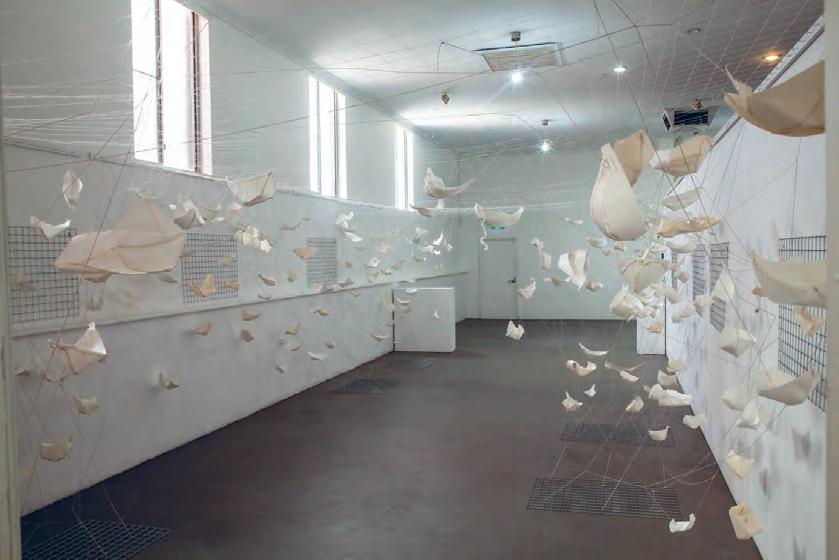
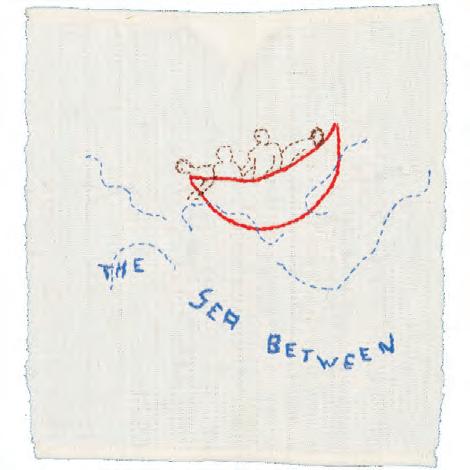
LOCATION: DENMARK
YEAR OF BIRTH: 1963
PRIMARY MEDIUM/S: TEXTILE
YEARS AS PRACTICING ARTIST: 13
Ruth Halbert is a lifelong textile maker. Her practice has evolved from making for domestic use and pleasure, to using textile techniques and materials as mediums for inquiry into the personal, historical, environmental and the social. For Halbert, the touch and feeling alive in thread, fibre and cloth are the basis for drawing audiences into engaging with her work. She uses textiles to create an immersive experience, responding to specific locations and to political or social events reverberating today, including investigating her own colonial history. She extends her processes through installation, text and storytelling, and, informed by her scientific background, often uses number play to enrich her visual language.
Halbert has British heritage, descended from 19th-century colonisers and indentured servants who sailed to the west and south of Australia. Her Wheatbelt childhood was grounded in handcrafting with natural materials. Crafting for personal use connected her to a worldwide community of makers and to the historic legacy of textiles. After working in science, Halbert returned to her textile roots, studying visual art at Edith Cowan University. From an ArtSource studio in Perth, she showed in group exhibitions and undertook residencies in WA and Sweden. Since moving to Denmark, Halbert has had numerous solo and collaborative exhibitions and projects throughout the South West of WA. She is a member of Butter Factory Studios Collective and Albany Weavers.
SWAN ARTWORK/S: PENITENCE
YEAR: 2023–24
MEDIUM: TEXTILE
In 2016, Halbert began writing letters of protest about the offshore detention of people seeking asylum in Australia, taking place on Manus Island and Nauru. The letter writing was an ongoing process: one letter per day for each person in detention, addressed to the Prime Minister. These letters have formed the basis for much artistic inquiry. Castaway (2017) was an installation of paper vessels containing stories of how people come to be in Australia, suspended in a network of threads. Witness (2018) invited people to stitch onto hand-woven cloth their response to statements from then-Minister for Immigration and Border Protection Peter Dutton and then-detainee Behrouz Boochani. Penitence is a trial piece for a series of 14 cloths she will later make in memory of the men who died in Australian detention. In various world cultures, the mythic “three Fates” determine each human’s fate: by spinning each thread of life, measuring its length and cutting it at the person’s death. Cloth accompanies us throughout life, from birth swaddling to death shrouding and everything in between. These works are a form of mourning – both of the loss of these lives, and that of our collective humanity as complicit bystanders in Australia’s immigration policy.
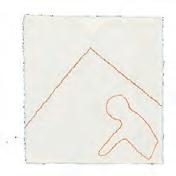

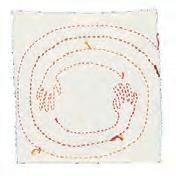
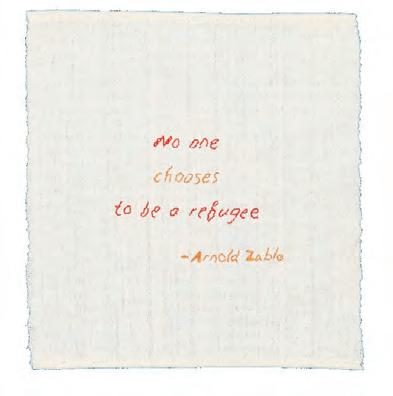
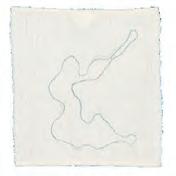



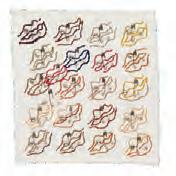
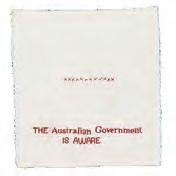
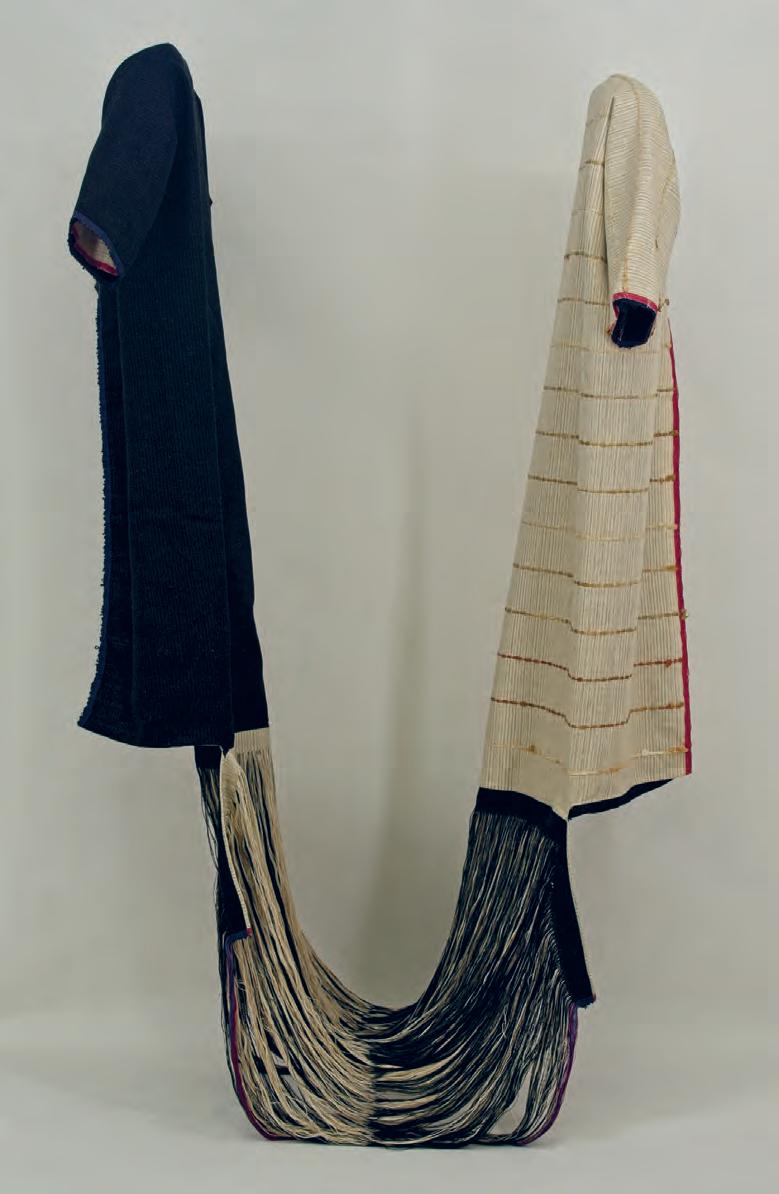 119
Ruth Halbert, A valediction , 2023. Photograph: Bewley Shaylor, courtesy the artist.
119
Ruth Halbert, A valediction , 2023. Photograph: Bewley Shaylor, courtesy the artist.
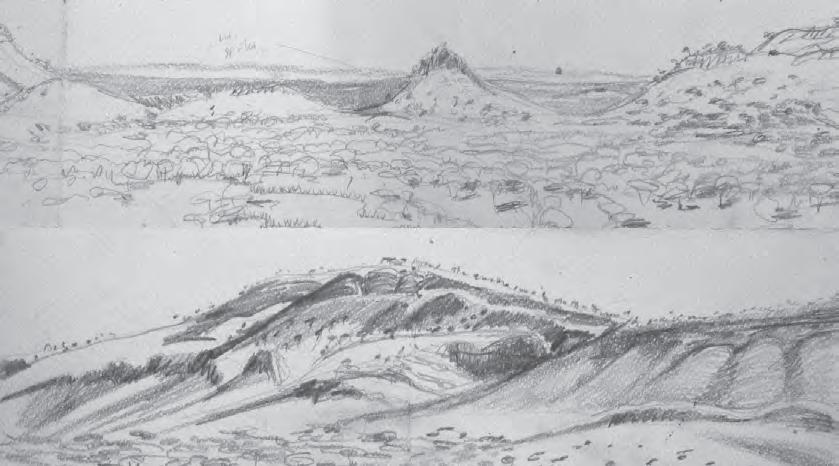

LOCATION: DENMARK
YEAR OF BIRTH: 1978
PRIMARY MEDIUM/S: ENCAUSTIC WAX, OIL PAINTING, MIXED MEDIA
YEARS AS PRACTICING ARTIST: 23
Carly Le Cerf is an artist working with oil paint and encaustic wax techniques to produce sublime portrayals of the Australian landscape, with the organic and unpredictable nature of the molten wax bringing forth unmapped possibilities. Le Cerf’s process is highly attuned and her work – primarily presented as collections or series exploring the intricacies of specific places – is informed by regular excursions to regional and remote parts of Western Australia. The resulting artworks are not just visual representations of the artist’s encounters but also carry the essence of her experience in the landscape. The work is the process – carving and incising, layering and melting, deconstructing trees, land and sky into colour, lines, form and space. Le Cerf strives to capture the vastness, deep time and geology of interior Australia, expressing its sublime beauty in marks, simultaneously figurative and emotive, and ultimately intending to evoke a multisensorial response in the viewer.
SWAN ARTWORK/S: UNFOLDING
YEAR:
MEDIUM:
2023–24
ENCAUSTIC WAX
Unfolding is a large concertina sketch based on a smaller concertina sketch completed during a self-funded residency at Cheela Plains Station in Paraburdoo. The original sketch was made in a single three-hour session, depicting an expansive vista witnessed by the artist from a hillside, as the sun rose and lit up the crests of the surrounding ranges. Le Cerf has reproduced each fold of the original sketch in encaustic wax, creating a large and encompassing work that emphasises the details of this awe-inspiring landscape. It is not a direct replication of the source sketch, but rather a translation aided by other documentation created on-site, including painting colour swatches, written notes, video and voice recordings, and other sketches, reflecting a thorough and immersive emotional exploration.
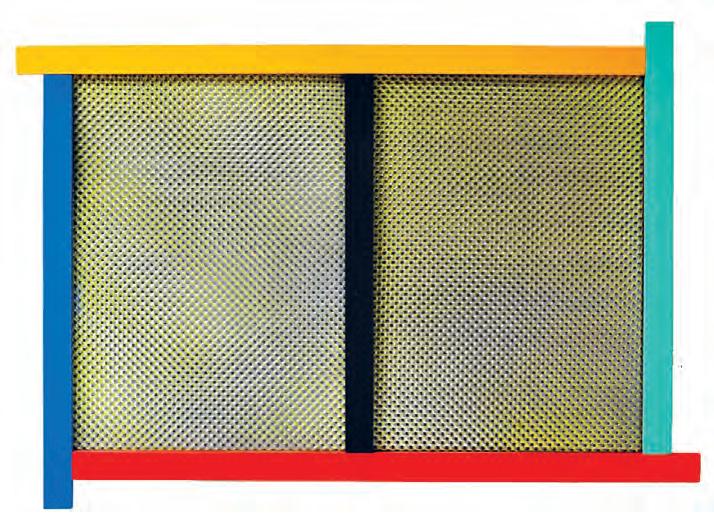
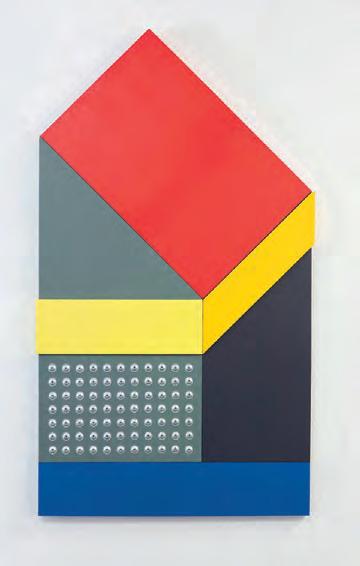
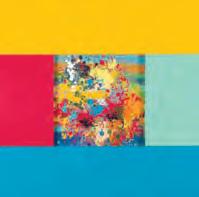
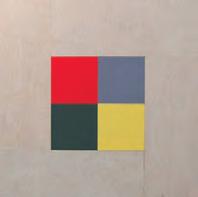
PAUL MONCRIEFF
LOCATION: KENTDALE
YEAR OF BIRTH: 1947
PRIMARY MEDIUM/S: ASSEMBLAGE, PAINTING
YEARS AS PRACTICING ARTIST: 45
Paul Moncrieff’s work explores the concrete, the non-objective object and non-figurative formalism. He assembles hard-edged compositions and formal juxtapositions using utilitarian workable plywood, timber supports and acrylic paint. This practice has evolved from Moncrieff’s discovery of the modernist project, and a strong sense of connection to the formal aspects of studio art practice: composition, proportion, rhythm, pattern, colour and systems. He has an ongoing fascination with the De Stijl movement, a group of artists active in the Netherlands roughly between 1917 to 1931 who had a profound impact on the development of abstract art, as well as modern architecture and design. Moncrieff has a particular interest in architect Gerrit Rietveld, finding his use of often mundane materials and his ongoing development of ideas for furniture and objects both playful and instructive. Over his career, Moncrieff has developed his work upon systematic variations of consistent themes, creating a body of work that is identifiable and interconnected. Increasingly, he has started to respond to the architectural spaces in which his work is presented, extending his practice into the three-dimensional. Moncrieff has been exhibiting since 1978 in gallery locations in Perth, regional WA and also on occasion in the eastern states. In this time, he has had 21 solo exhibitions, 11 shared exhibitions, and participated in many group exhibitions. His paintings, drawings and prints are now part of a considerable number of major public and private Australian art collections. Until 2007 he was the coordinator of the painting and drawing programme at Edith Cowan University, Mount Lawley WA campus. Over the years he has curated several thematic exhibitions. He now lives at Kentdale on the south coast of WA with artist Jillian Green. He has designed and built their house, studio, workshop, orchard and vegetable garden. There, he continues to develop and evolve his art practice. All
SWAN ARTWORK/S:
TITLE, YEAR: BHPM8, 2018
MEDIUM:
DIMENSIONS:
ACRYLIC, PLYWOOD PANELS, SPRAY PAINT ON STRETCHED CANVAS
60 X 40 CM
TITLE, YEAR: TOYBOX, 2017
MEDIUM:
DIMENSIONS:
ACRYLIC ON ASSEMBLED PLYWOOD PANELS, METAL WASHERS
140 X 80 CM
TITLE, YEAR: 44 SPLASH, 2015
MEDIUM: ACRYLIC ON ASSEMBLED PLYWOOD PANELS
DIMENSIONS:
TITLE, YEAR:
MEDIUM:
DIMENSIONS:
120 X 120 CM
A R C H I T Y P E, 2015
ACRYLIC ON ASSEMBLED BIRCH PLYWOOD PANELS
120 X 120 CM
DR. MICHAEL BIANCO is an artist, curator, researcher, activist, cook, beekeeper and director of Bunbury Regional Art Gallery (BRAG). He brings a wealth of qualifications and expertise to the role, including a Ph.D. from The University of Western Australia, an MFA in Art & Design from the University of Michigan and an MA in Curatorial Practice from the California College of the Arts. With nearly two decades of international arts industry experience, Dr. Bianco’s achievements have solidified his reputation as a strong leader in the arts.
DR. DONNA MAZZA is a South Westbased author and Associate Professor in Creative Writing at Edith Cowan University. Her novel Fauna was a finalist in Aurealis Best Science Fiction 2020, and she won the TAG Hungerford Award in 2005. Her fiction recently appeared in Westerly, Overland and KYD New Australian Fiction and she has written for The Conversation on kangaroos, swearing, utopia and Australian literature. In 2023, she travelled to Ireland for the Tyrone Guthrie International Exchange.
JO PORTER holds a BA (Hons) in Literature and Writing and currently works as a Regional Learning Consultant at Edith Cowan University. Immersion in words and art has always been her solace and salvation. Jo is interested in exploring the interconnected spatio-temporal meanings that form understandings of place. She has performed her poetry at the Margaret River Readers and Writers Festival and open mic events. She is grateful to live and write in Goomburrup, Wardandi Country, WA.
COLOPHON
Bunbury Regional Art Gallery and Mess Books acknowledge the Wardandi Noongar people as the Traditional Owners of the land upon which the gallery stands. We acknowledge their continuing connection to land, waters and community. We pay our respects to all First Nations peoples and their cultures, and to Elders past, present and emerging. The South West Art Now exhibition and this publication include artists working across the South West regions, on Wilman, Wardandi/Wadandi, Ganeang, Bibbulmun/Piblemen and Mineng/Minang/ Menang Country.
Published by Mess Books in collaboration with Bunbury Regional Art Gallery (BRAG), in Boorloo/Perth, Western Australia, 2024.
Mess Books is an Australian publisher and creative practice interested in contemporary art, photography, design, society and architecture.
WWW.MESS-BOOKS.COM
Bunbury Regional Art Gallery (BRAG) is the premier public art gallery in Western Australia’s South West region, and is home to the City Art Collection. Housed in a former convent, the distinct pink building has become a Bunbury icon and boasts multiple formal exhibition spaces as well as community exhibition facilities. BRAG offers a diverse and stimulating program of exhibitions from regional, state and national sources. The exhibition schedule is complemented by an extensive range of public programs, events, functions, classes and workshops.
WWW.BRAG.ORG.AU
Dr. Michael Bianco would like to extend a heartfelt thank you to Emma Pegrum and Bec Stawell Wilson of Mess Books for their commitment to the realisation of this publication.
© Mess Books, Bunbury Regional Art Gallery, the Artists and the Authors, 2023. All artworks are copyright of the Artists, reproduced here courtesy of those Artists and associated galleries. The copyright in the written contributions is owned by the Authors of those texts respectively. Apart from any use as permitted under the Copyright Act 1968, no part of this book may be reproduced or communicated to the public in any manner whatsoever without written permission. Enquiries should be directed to the Bunbury Regional Art Gallery.
Printed by: Bambra, Melbourne
ISBN 978-0-6455860-4-6
EDITORIAL TEAM:
Publisher: Mess Books
Editors: Emma Pegrum & Dr. Michael Bianco
Designer: Bec Stawell Wilson
Proofreader: Tim Gauntlett
BRAG TEAM:
Director: Dr. Michael Bianco
Administration & Operations Coordinator: Anna Edmundson
Acting City of Bunbury Curator/
Registrar: Donna Greenwood
Education Officer: Molly Werner
Noongar Arts Program Officer: Karen Morgan
Gallery Officer: Deanna Mosca
Exhibitions Officer: Simon Long
BRAG Casual Gallery Attendants: Penelope
Elliott, Josef Quinn, Dan Kus, Donna Greenwood, Claudia Stiglmayer, Payton Mann

SOUTH WEST ART NOW 2024
BUNBURY REGIONAL ART GALLERY
PUBLISHED BY: MESS BOOKS
ISBN: 978-0-6455860-4-6
BUNBURY REGIONAL ART GALLERY
PUBLISHED BY: MESS BOOKS
ISBN: 978-0-6455860-4-6
CONSTELLATIONS ARE MADE UP OF STARS – POINTS OF LIGHT, CLUSTERS OF ENERGY. THESE STARS ARE FORMED THROUGH A PROCESS OF COMBINING FORCES, OF GAS BURNING AND GRAVITY PULLING. WHEN WE LOOK UP AT CONSTELLATIONS FROM A DISTANCE, THEY TELL US SOMETHING. CONSTELLATIONS HAVE ALWAYS HELD MEANING AND STORY, FOR MANY CULTURES THROUGHOUT HISTORY. THEY ARE GUIDES. THEY ARE COMPOSED OF AUTONOMOUS PARTS THAT EXIST IN THEIR OWN RIGHT BUT ARE BOUND UP TOGETHER AND, THROUGH THEIR CONNECTIONS, FORM PARTICULAR MEANINGS. WE ONLY SEE THESE STARS, THESE CONSTELLATIONS, WHEN THEY ARE ILLUMINATED. IN THE COSMOS, THIS HAPPENS BY NATURE’S VIRTUE EVERY NIGHT. BUT DOWN HERE, WE MUST SHINE LIGHT ON OUR ARTISTIC CONSTELLATIONS OURSELVES, BY SEEKING OUT CREATIVE WORK AND SHARING IN IT AS A COMMUNITY.
SUCH IS THE PURPOSE OF SOUTH WEST ART NOW, THE LONGEST-RUNNING REVIEW OF CONTEMPORARY ART PRACTICES IN THE SOUTH WEST REGION. AS ONE OF THE FLAGSHIP EXHIBITIONS FOR A REGION THAT CONTINUES TO PRODUCE SOME OF THE MOST SIGNIFICANT ARTISTS IN THE STATE, THE BIENNIAL SURVEY OFFERS A VITAL OPPORTUNITY TO REFLECT ON DYNAMIC RECENT DEVELOPMENTS IN THE ARTS, AND TO CONSIDER WHAT THE REGION IS PRODUCING THAT IS UNIQUE WITHIN A GLOBAL CONTEXT.
THIS YEAR’S EXHIBITION, ENTITLED + A NEW CONSTELLATION, RECOGNISES THE HOMES AND STUDIOS OF THESE ARTISTS AS ENERGY CENTRES THAT ARE SCATTERED AND SOLITARY BUT ALSO INEXTRICABLY LINKED. BY TRACING THESE CONNECTIONS – DRAWING NEW CONSTELLATIONS – WE CAN HOPEFULLY MAKE MEANING THAT IS USEFUL AS WE GO ABOUT OUR LIVES. A
THIS PUBLICATION SEEKS TO EXTEND AND SUSTAIN THE LIGHT CAST BY OUR FOCUS. PROVIDING INSIGHT INTO THE 28 ARTISTS REPRESENTED IN A NEW CONSTELLATION, IT IS DESIGNED TO COMPLEMENT THE EXHIBITION AND OFFER REFLECTIONS ON PROCESS AND PRACTICE – TO BE RETURNED TO OVER TIME AS A LASTING DOCUMENTATION OF THE ARTISTIC RECORDS FOUND INSIDE. ARTISTS: AMANDA BELL,. PHILIP BERRY, IAN DANIELL,‘ ANTHONY DEBBO, KATE DEBBO, JENNI DOHERTY, THOMMO’S COMMUNITY GARDEN, FRANCESCO GERONAZZO, JILLIAN GREEN, RUTH HALBERT, SARAH HEWER, SANDRA HILL, SEAMUS HUGHES, COREY KHAN, CARLY LE CERF, ELISA MARKESYOUNG, ALEX MICKLE, NICOLE MICKLE, PAUL MONCRIEFF, DEANNA MOSCA, KATE ALIDA MULLEN, CHESTER NEALIE, LORI PENSINI, RIZZY, HELEN SEIVER, LOUISE TASKER, MONIQUE TIPPETT, CHRISTOPHER YOUNG.
